PARTICIPANTS ————————-


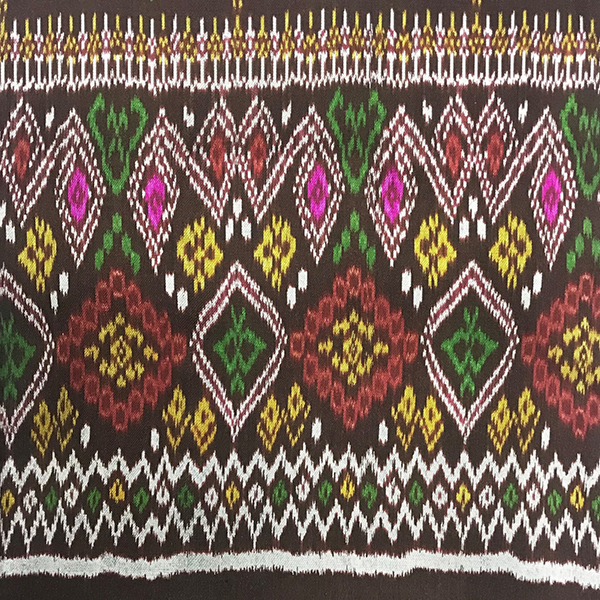
COLOR SILK (CAMBODIA)
The Color Silk Foundation, based in Phnom Penh, started in 2009 with 10 weavers. Today, the award-winning foundation works with more than 600 weavers, over seven villages in the Takeo province in Cambodia, with 250 farmers who grow mulberry leaves needed for silk production. The Foundation aims to empower women in poor rural communities and to preserve the silk weaving traditions of Cambodia, providing training and workshops in sericulture, dyeing and weaving. Color Silk (Cambodia) produce multiple handwoven products from such as clothes, scarves, fashion items and fabrics made from cotton, silk or mixed fibers using Cambodian ikat traditional designs combined with modern design concepts.
W: colorsilkcommunity.wix.com/colorsilk-cambodia
IG: @colorsilk_cambodia
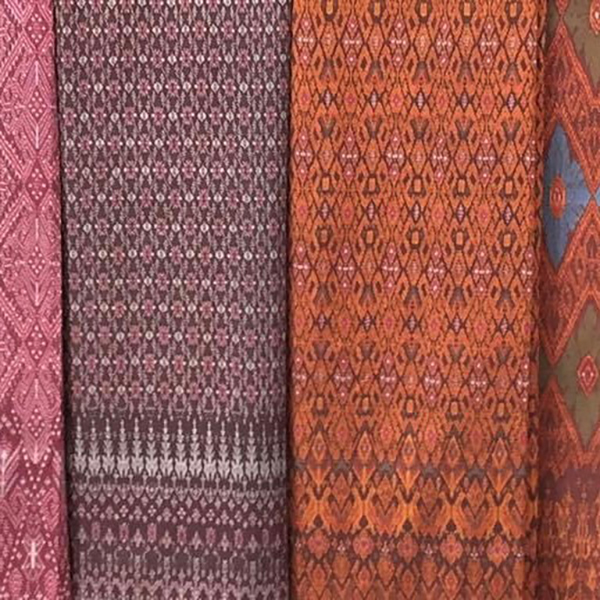
KEI KHMER
TEXTILE COMMUNITY
Kei Khmer Textile Community was established in Phnom Penh to preserve traditional designs as well as the ikat weaving and natural dyeing skills in their community. The organization supports village weavers, enabling them to earn an income in addition to rice farming, and thus to allow weaving activities to continue to flourish. In seeking to preserve the traditional skills of handweaving, Kei Khmer has researched many kinds of natural resources and old designs of Khmer traditional patterns whilst new patterns have also been created to appeal to the younger generation.
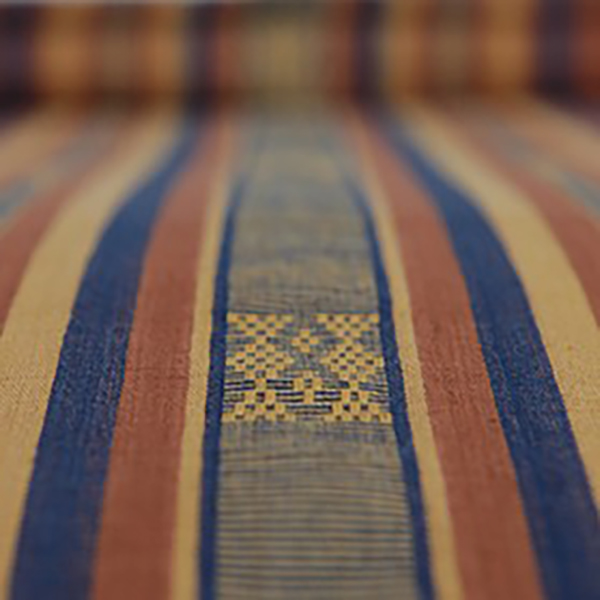
ASPPUK
The weavers of ASPPUK, based in Lombok and West Sumatra, are women victims of violence, disaster victims, female heads of families and migrant workers. Their textiles are woven in traditional ways, dyed with natural dyes from plants. Some feature recycled materials, such as threads from recycled plastic waste. These weavers participate in preserving local culture and through their economic activities, are able to influence women in these rural communities that there are alternatives to travelling abroad as migrant workers. By supporting these weavers through their products, one contributes to culture preservation, the strengthening of the capacity of women at the grassroots and helping to care for the environment. For this collection, ASPPUK is collaborating with designers Merdi Sihombing and Risza Novianty Sao Sao.
W: asppukgallery.or.id
IG: @dpuk_store
FB: Perempuan Pelestari Tradisi
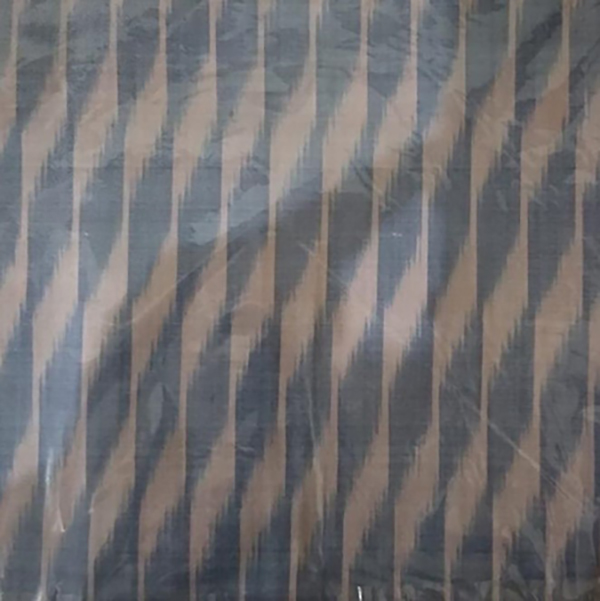
BENGKALIS COMMUNITY OF THE PEATLAND AND MANGROVE RESTORATION AGENCY (BRGM)
The Bengkalis Women Weaving Community is a group of at least 50 weavers in Bengkalis, Riau established in 2007 but with weaving roots in the era of the Siak Kingdom (1723 BC). Bengkalis weaving is also known as lejo awal, with motifs representing respective philosophies in Malay culture. As there are more than 200 hectares of pineapple plantations in Bengkalis. pineapple leaves have been processed into textile fibers for use by the weavers to produce a soft, high-quality textile, coloured with natural dyes. This collection is designed by Ahmad Nur Hasyim of Kekan Wastra Gallery.
IG: @bengkalisweavingcommunity
FB: Kelompok Penenun Bengkalis
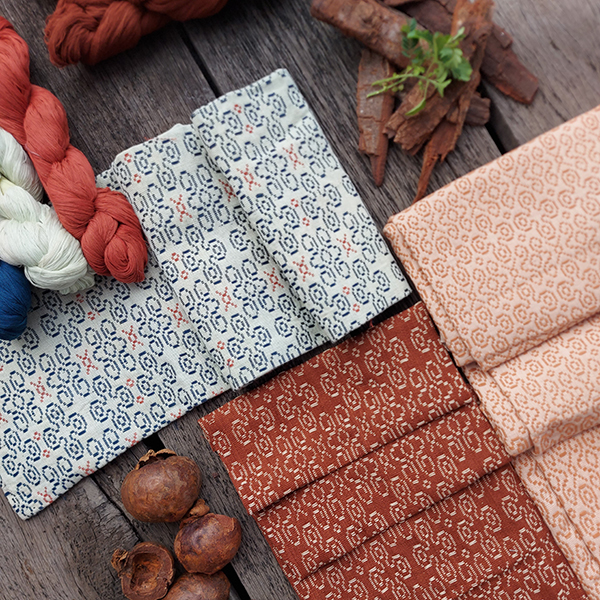
BORU, WITH THE WEAVERS OF JEPARA
BORU, collaborating with a weaving community in Jepara, Central Java, specialises traditional Batak cloths and motifs or ulos. By doing so, they seek to introduce Batak culture to contemporary apparel, accessories and home decor. BORU is an advocate of slow fashion and strives to uphold values that champion social responsibility, environmental care and empowerment of local communities. BORU’s designs use natural dyes, with colour experimentation continuously explored to create a variety of future products that do not require synthetic colours.
W: borugoods.com
IG: @borugoods
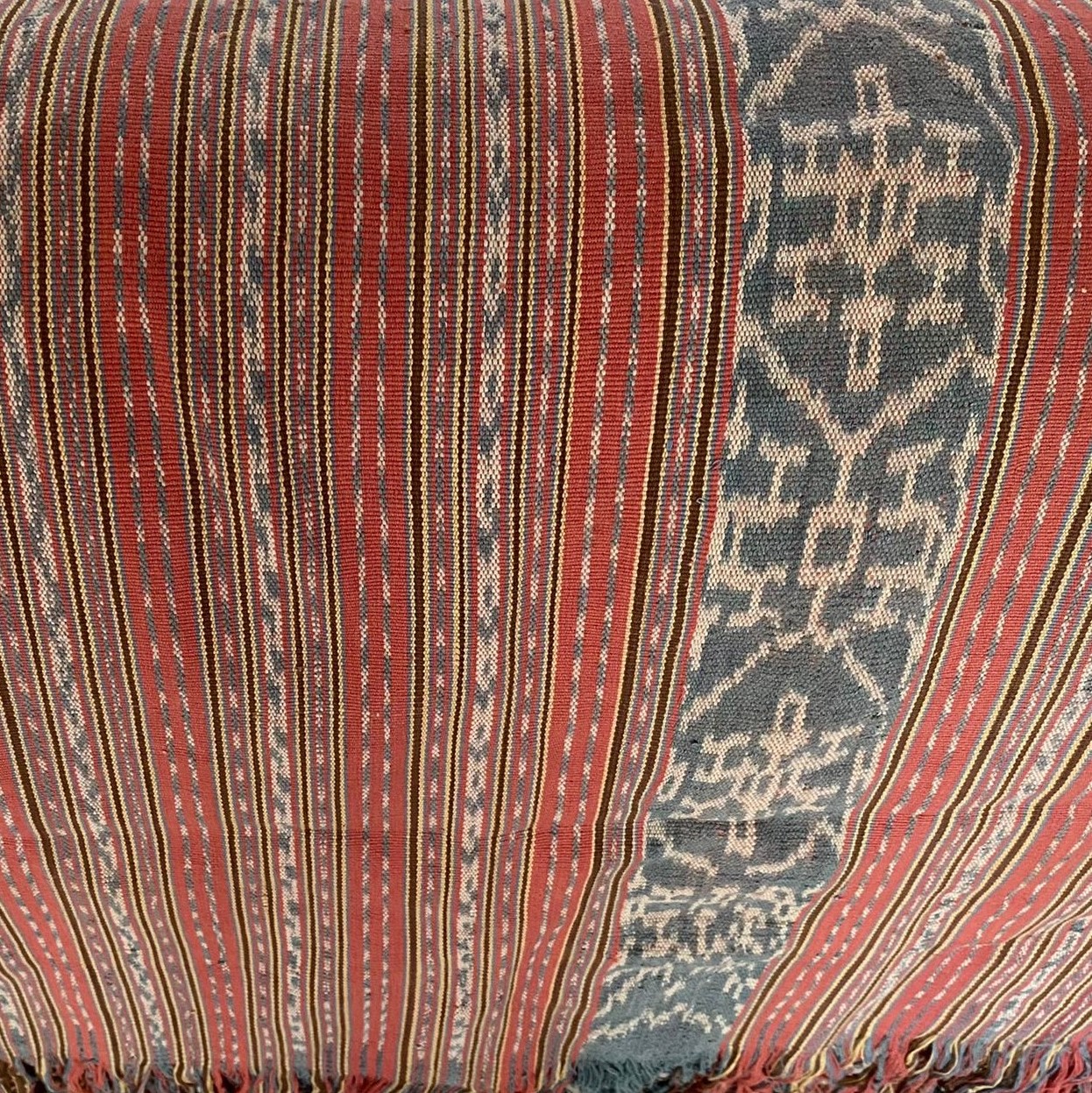
CCD-NL, with Wehor Hadomi and Ina Manenu
The Center for Cultural Development the Netherlands (CCD-NL) is a Dutch non-profit organization based in Rotterdam focused on fostering cultural development and preserving cultural heritage. CCD-NL regularly organizes webinars and workshops related to ikat weaving to ensure that this tradition is preserved in its original form, as well as through integration into ‘new’ designs that honor its cultural integrity. CCD-NL works with artisans in East Nusa Tenggara (NTT), Indonesia, specifically collaborating with weaving groups Wehor Hadomi in Belu, West Timor and Ina Manenu in Rote-Ndao, and with the designers Selviana Boi Dao (Belu), Lidwina Vivawaty Ng (Belu), and Marsha Fattu (Rote-Ndao).
W: www.ccd-nl.org/
IG:@ccd_nl
IG:@ikat.nl
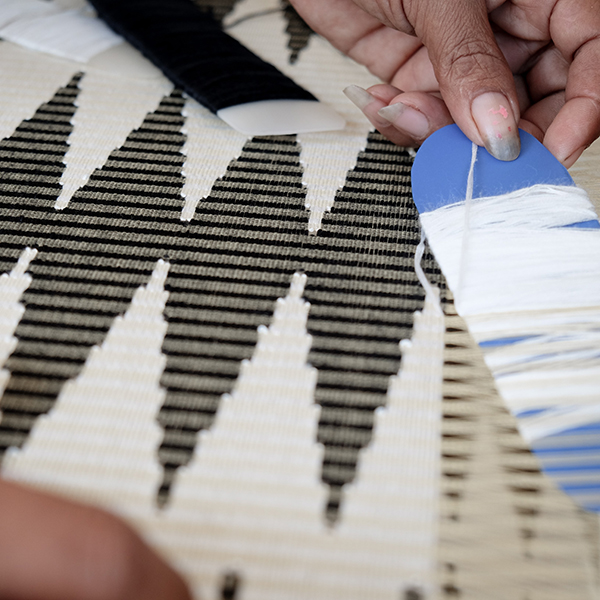
KMANA, WITH THE WEAVERS OF NUSA PENIDA
Rang rang is a unique textile woven in Nusa Penida, a small island next to Bali. Each piece is woven on upright hand looms with striking geometrical patterns. These textiles were worn as sarongs for Hindu ceremonies. The technique and fabric were on the verge of extinction, but now revived thanks to the work of craft NGOs and brands such as Kmana. The production of rang rang is now the main job for several women, complementing their livelihoods as farmers and seaweed growers. The textile is made from cotton and dyed with natural dyes from plants grown or foraged locally to give beautiful soft tones as well as more vibrant colours.
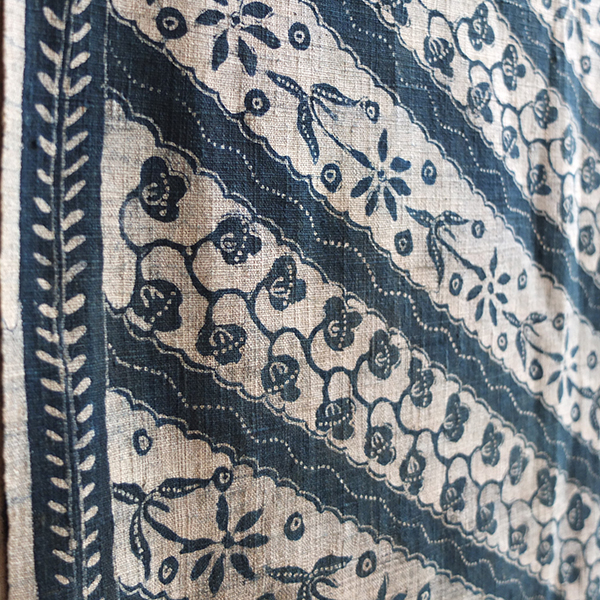
LUCY’S BATIK, WITH THE WEAVERS OF TUBAN
Lucy’s Batik retails Indonesian arts and crafts, as well as hold educational and lifestyle events and resources in Jakarta. One of their focus areas is Kerek, Tuban where they work with ten weavers who weave cotton cloth which is then dyed using natural dyes and then batiked to apply patterns using a wax resist. Batik Tuban is unique as the batiking is done on hand-woven, rather than machine-produced, cloth. Each textile made for use in this area is created for a specific purpose, to be worn by a person of a particular age, social or residential group, to serve in life-cycle events as well as to act as a focal point in agricultural ceremonies or curing rites.
IG: @lucysbatik
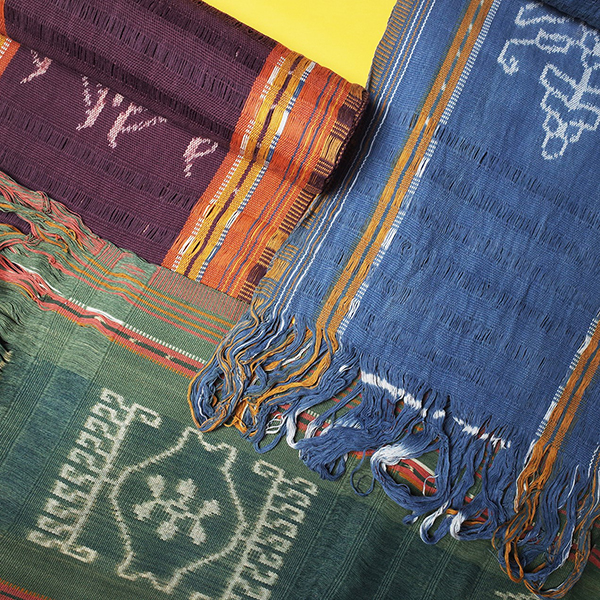
NOESA, WITH WATUBO
Noesa reimagines textiles from the island of Flores, East Indonesia – by taking segments from traditional patterns and presenting these in new colour combinations, they remodel these textile traditions into functional fashion products. Noesa partners with Watubo, a community of ikat weavers in Watublapi village in Sikka regency. This collective of 26 ikat weaving artisans aspires to conserve their local art and cultural heritage, whilst increasing the prosperity of their communities. The community also seeks to work with respect and care for the environment, using natural dyes and sustainable materials. Together, this partnership highlights culture, shares local wisdom and makes this accessible to all through their products.
W: noesa.co.id
IG: @noesa.co.id
IG: @watubo
FB: Noesa
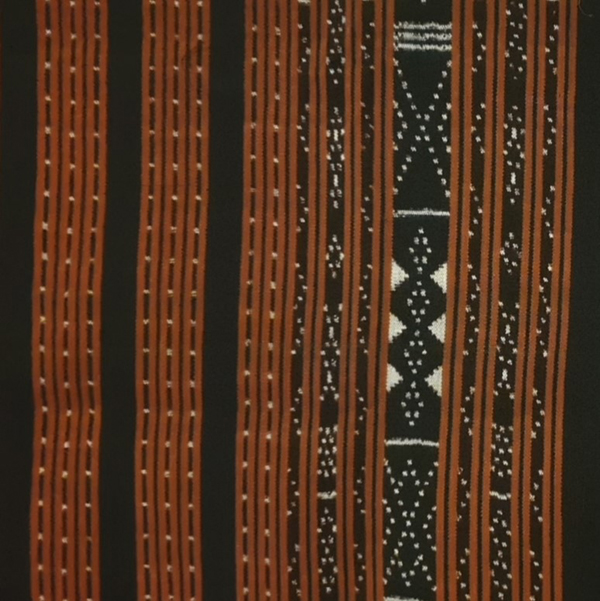
RUMAH RAKUJI, WITH PALU’E WEAVERS
Rumah Rakuji describes itself as a shelter for Indonesian culture, arts and craft. Founded by Myra Widiono, they have partnered with various artisan communities, including those in the remote reaches of the archipelago. Palu’e is a small island accessible by a sea journey of six hours from the coast of Flores in East Indonesia. The island is dominated by a volcano that erupts every 30 years or so, the last time in 2013. This has resulted in some of the population now displaced and living on Flores. This collection features the handwoven ikat textiles of the island, woven by weavers on Palu’e as well as some pieces by the former inhabitants of the island now relocated and residing in Nangahore, Flores.
W: www.rumahrakuji.com
IG: @rumahrakuji
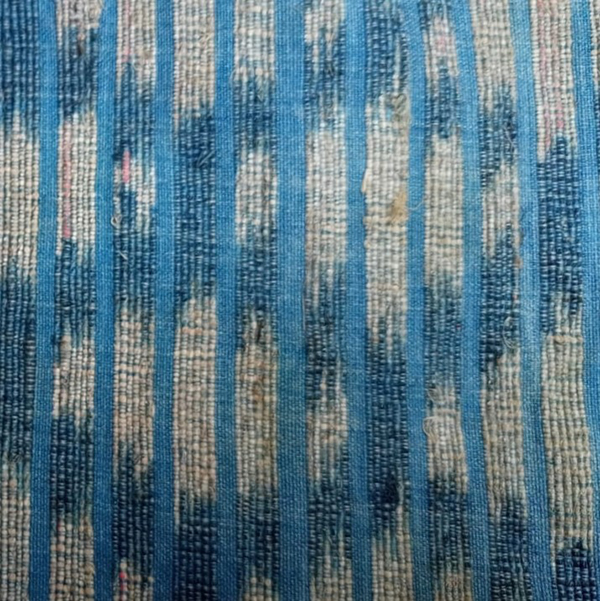
RUMAH RAKUJI, WITH TUNAS MEKAR BATUBURA
The weaving community of Tunas Mekar Batubura in the village of Tanjung Isuy, East Kalimantan are from the Dayak Benuaq ethnic group. Their traditional handwoven textiles are known as ulap doyo, produced using doyo fibre from Curculigo latifolia leaves. The community preserves and perpetuates this craft from fiber harvesting and producing the yarn to the usage of natural dyes, through to the weaving process. Rumah Rakuji has been a consistent partner to the community, introducing innovative approaches to this textile. This collection, designed by Emmy Thee, showcases a contemporary take on this traditional yet versatile fabric.
W: www.rumahrakuji.com
IG: @rumahrakuji
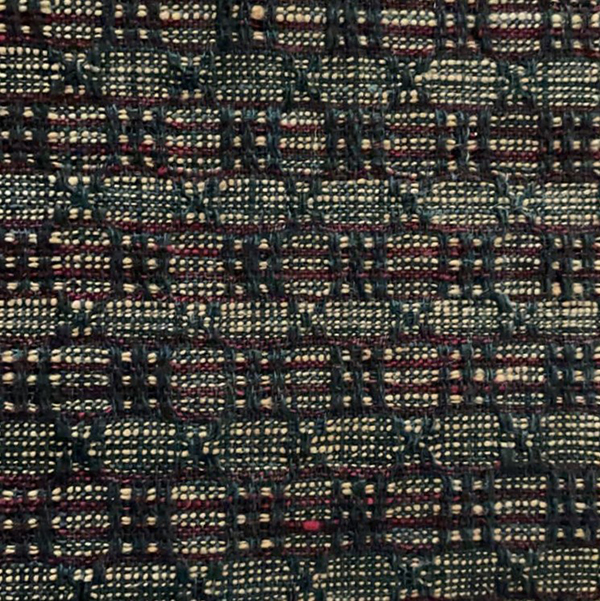
SEKAR KAWUNG FOUNDATION
Sekar Kawung Foundation is a social enterprise that works closely with local artisans to create sustainable products for contemporary urban consumers using their deep cultural knowledge on how to use natural resources carefully. For this collection, weft decorative hand-loomed textiles known as tenun gedog kembangan made from home-grown cotton by women weavers in Tuban, East Java will be featured. These are some of the most ancient types of woven cloth developed in Tuban before batik became popular in later centuries. Weavers in Tuban make a rich variety of textiles, including a very simple ikat and plain cloth then decorated using batik. This collection is designed by Wahyo Abraham.
W: sekarkawung.com
IG: @sekarkawung_id
IG: @nawanthi.indonesia
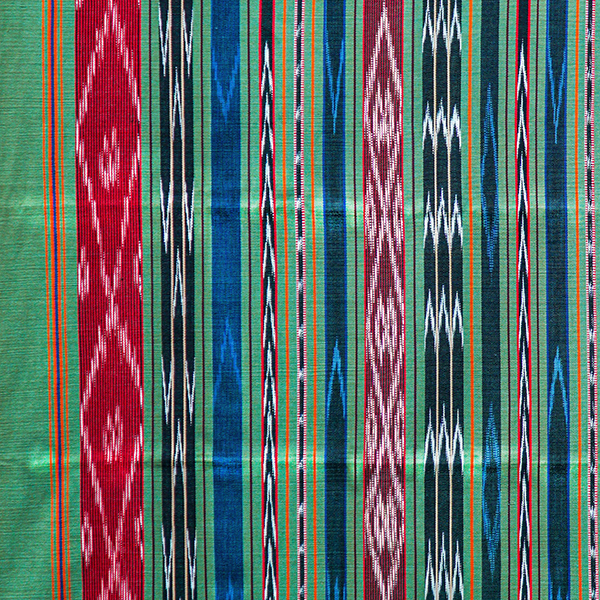
SORHA NAULI ,WITH THE WEAVERS OF PAPANDE VILLAGE
Sorha refers to the spinning wheel whilst nauli means beautiful in the Batak Toba language. Sorha Nauli currently works with ten artisans in Papande Village, Muara District in the North Sumatra province. Papande is situated on Sibandang Island in Lake Toba, accessible by boat from the capital of the Muara district. In ancient times, weavers on this island only wove ulos cloth for traditional ritual purposes. With the passage of time and the increasing demand for fashion needs, weavers are now adapting the use of these textiles. Cotton thread is used whilst natural dyeing is being revived once again.
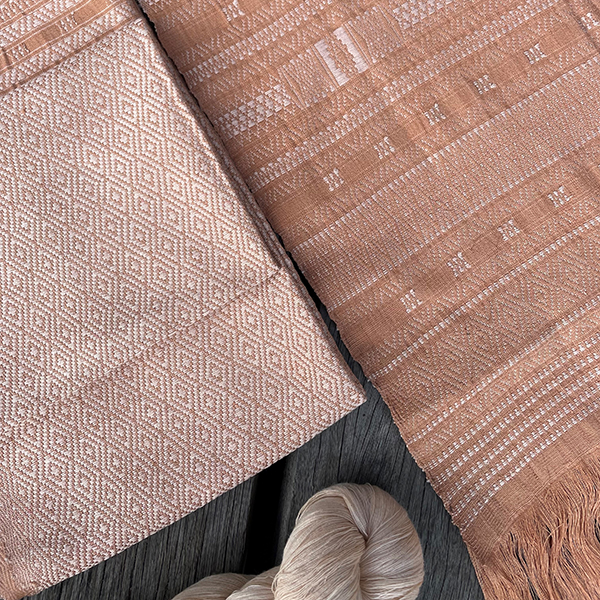
TOBATENUN, WITH JABU BONANG
Tobatenun is the distribution platform of PT Toba Tenun Sejahtra, a social enterprise founded in 2018 working to revitalise and preserve threatened textile traditions while tackling social issues in its related communities. Weavers and artisans partnered with Tobatenun gather and work through the community home, Jabu Bonang, located in the city of Pematang Siantar, North Sumatra. Jabu Bonang is affiliated with over 50 weavers from Siantar and the villages of Hutaraja and Lumban Suhi-suhi in Samosir. They weave ulos, the traditional textile at the heart of Batak culture. Tobatenun encourages the use of natural dyes and fibers and focuses on the use of gedogan or back-strap looms instead of other non-traditional methods currently saturating the mass-produced market.
W: www.tobatenun.com
IG: @tobatenun
IG: @jabu.bonang
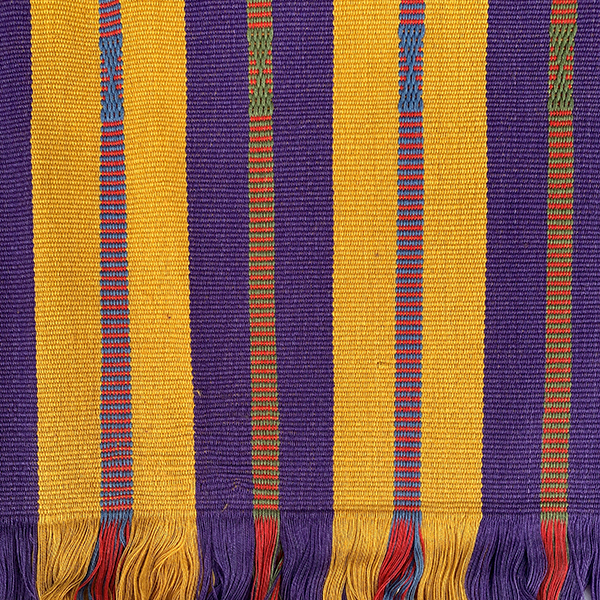
TORAJAMELO
TOAJAMELO is an ethical slow lifestyle brand that works with rural and remote women-led weaving collectives across Indonesia to preserve and sustain the cultural heritage of weaving. The brand works with weavers in multiple locations in Sulawesi and East Indonesia. This collection features the work of 30 weavers in partner communities in Lembata as well as from Adonara and Mamasa. The range blends heritage weaving with modern cuts, featuring indigenous techniques and motifs, such as the penetoten, mowak and palawa, whilst emphasizing practicality, functionality and utility.
W: torajamelo.com
IG: @torajamelo
FB: TORAJAMELO
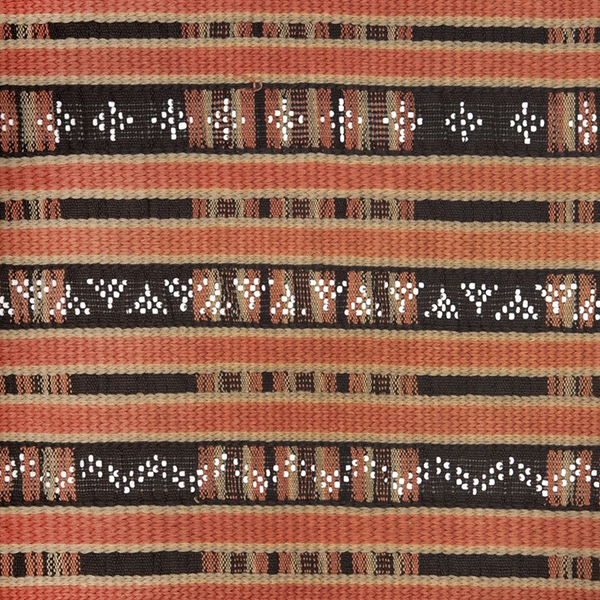
KATU VILLAGE OF HOUYHOUN
There are 50 weavers among the women of the Katu ethnic group of Houyhoun Village who continue the ancient tradition of weaving on foot-braced, backstrap looms. The weavers use natural dyes to colour their cotton, banana fibre and silk threads, using complementary warp, weft twining, supplementary warp and complex weft twining to create patterns. Complex designs are also made using beads. The community now designs clothes from traditional textiles and will also be collaborating with designer Zoe Armeniades for TENUN Fashion Week.
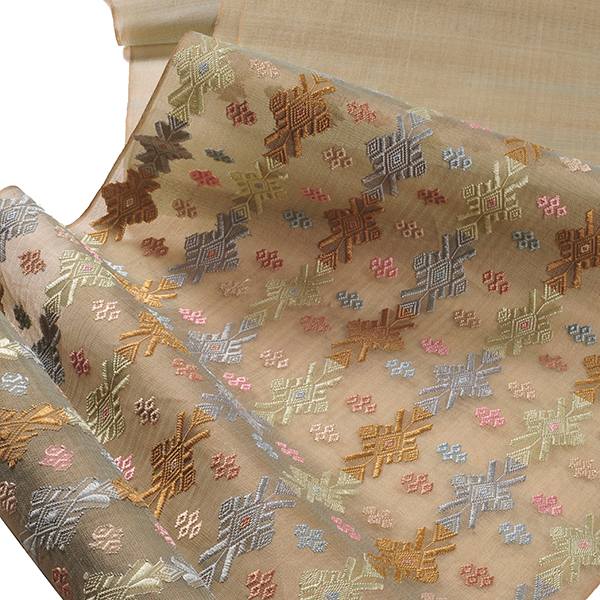
KHANG
KHANG, based in Vientiane, is a house of Lao textile and fashion, founded by Viengkham Nanthavongdouangsy, a master weaver and a leading fashion designer in Laos. KHANG accommodates 30 permanent women weavers whilst working also with weaving communities in different provinces in Laos, helping them to develop in quality and design. At KHANG, traditional and modern designs are crafted using ancient weaving techniques and only natural materials are selected for use. Over the past 20 years, Viengkham has trained many hundreds of people locally and internationally on weaving and natural dyeing, and has written and published a number of books on Lao textiles.
IG: @khang.laos
FB: KHANG
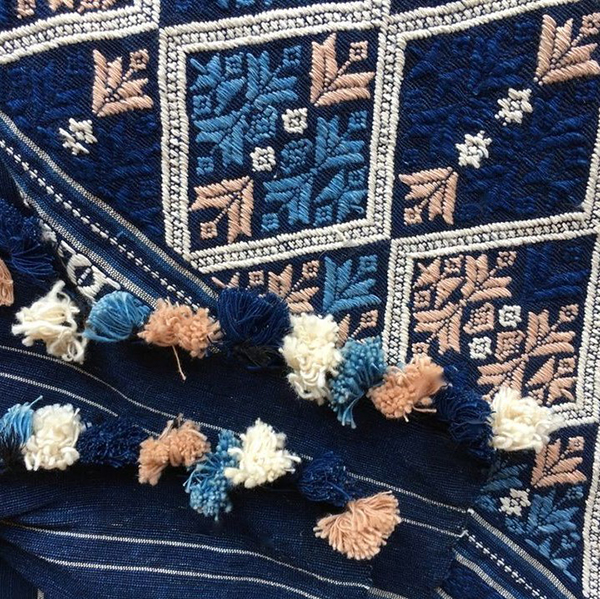
MA TÉ SAI
Ma Té Sai, based in Luang Prabang, works with artisans from many ethnic groups in Laos, including Lao, TaiLeu, Hmong, Akha, Katu, Yao, Lentan, and Khmu. Each group creates items that embrace and demonstrate their rich traditions and cultures. Since 2013, Ma Té Sai has been training various communities around Laos to sew – these include the TaiLeu women in Nambak district, Luang Prabang; Sengsavang, a centre for women at risk of trafficking in Savannakhet, South Laos; and women from Tai Daeng, Tai Dam, Lanten and Hmong ethnic communities in Luang Namtha, Northern Laos. These communities use traditional textiles produced in their areas, converting them into garments and homewares. By empowering women to sew, Ma Té Sai is able to support village production whole-heartedly, and to co-create modern handcrafted items for your lifestyle.
W: matesai.com
IG: ma_te_sai
FB: Ma Té Sai
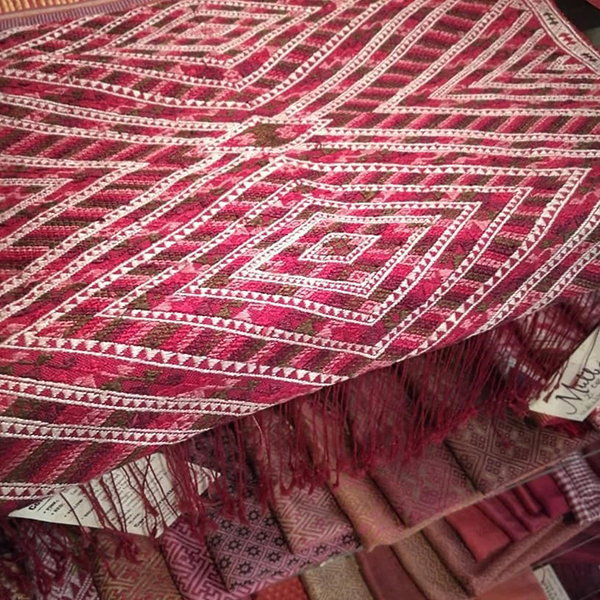
MULBERRIES
Mulberries, based in Xieng Khouang Province, is a Lao Fair Trade Organic Silk Organization, empowering Lao villagers through sustainable development projects. Working with 2,000 villagers in five provinces in Northern Laos, the communities are encouraged to grow mulberry trees, rear silkworms, reel, weave and dye silk in a sustainable and environmentally friendly way. The deeply-rooted cloth patterns of Laos have now been adapted for use in their present style, with a different meaning to each motif and varying colors according to the weaver’s ideas and personal taste.
W: www.mulberries.org
FB: Mulberries
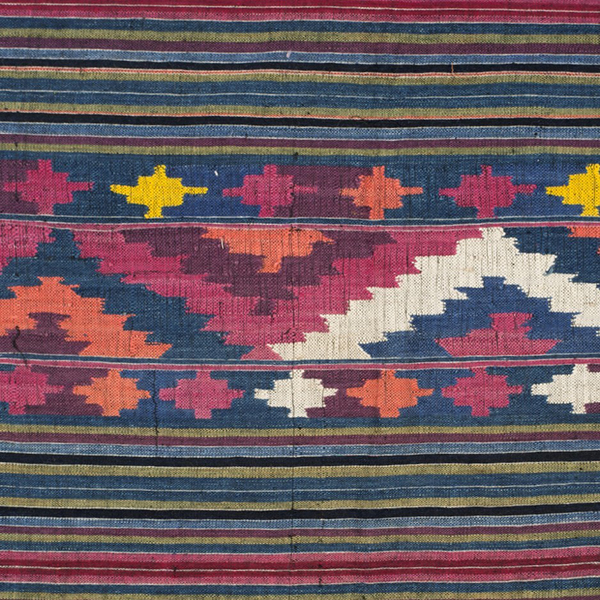
TAI LUE VILLAGE OF NAYANG
The Tai Lue of Nayang Village follow their ancestors’ tradition of weaving cotton dyed with natural materials. Some continue to cultivate and spin cotton, and many grow plants for dyeing, such as indigo, or forage for other ingredients in the neighbouring forest. Tai Lue weavers utilize continuous and discontinuous supplementary weft and dovetail tapestry designs. The village renowned for natural-dyed hand-spun cotton fabric in numerous colours, has some 150 women weaving in North Nayang village and 120 in South Nayang village. This community will be collaborating with designer Marika Feinsilber for this collection.
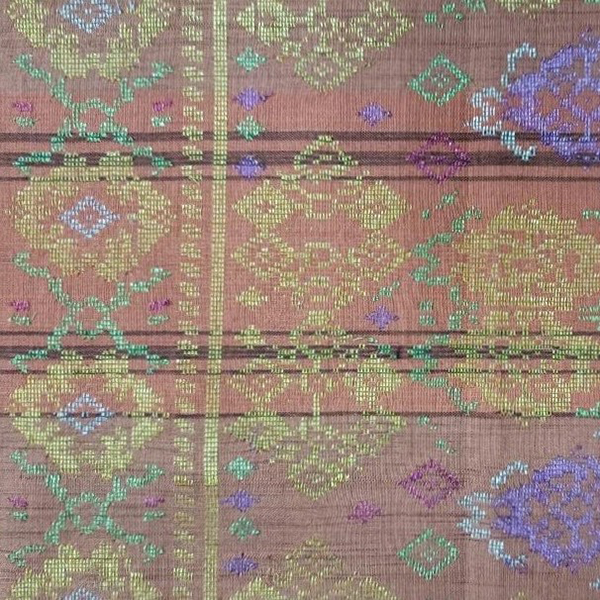
INSTITUT KRAF NEGARA
Institut Kraf Negara (IKN, the National Crafts Institute) in Selangor was established to preserve Malaysia’s various craft traditions, passing this on to new generations. IKN’s weaving community consists of young weavers interested to learn how to weave Malay songket and limar, in ways that can produce designs which can keep up with current fashion trends. Featured in this collection are the songket teknik ikat loseng, songket teknik sapuran and songket teknik beragi.
W: www.ikn.gov.my
IG: myikn_
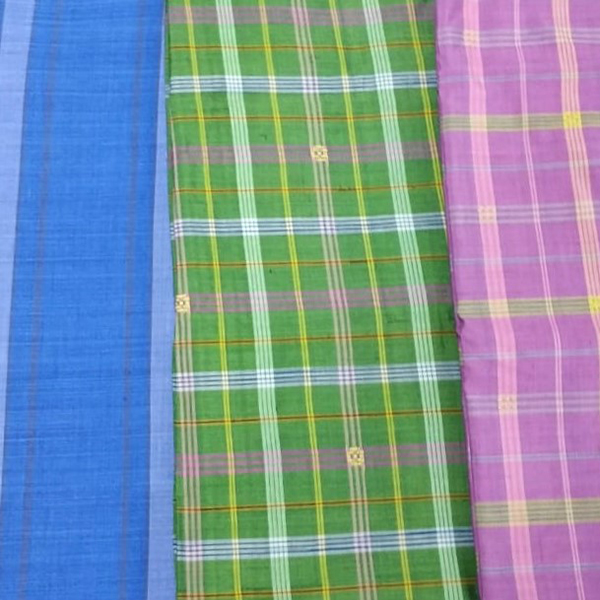
KAMPUNG PULAU KELADI WEAVERS
This collection of songket is handwoven by Hajjah Nortipah and her daughter, part of a community of weavers located in the village of Kampung Pulau Keladi in Pahang. The community strives to preserve the heritage of their handwoven songket passed down from their ancestors and now marketed as Tenun Sutera Pahang Diraja. This collection for TENUN will be designed by Bill Keith.
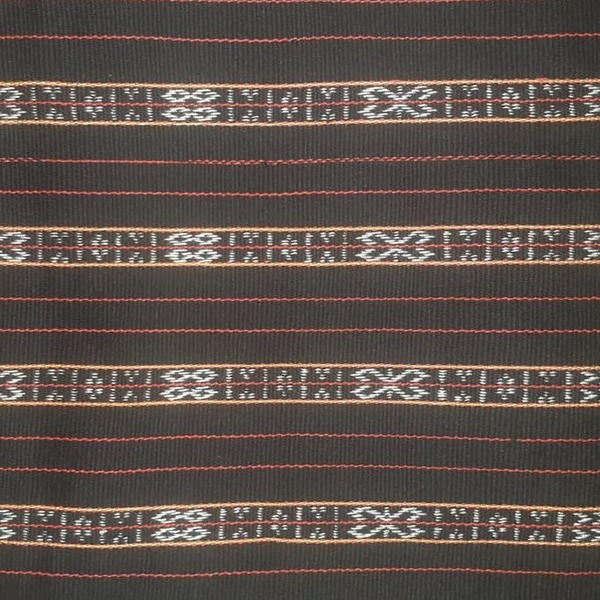
MEMORYIE CRAFT ENTERPRISE
Memoryie Craft is a group of four weavers based in Keningau, Sabah. They will be showcasing weavings from the Rungus ethnic group as well as songket dastar, also known as irranun. Rungus textiles are woven on backstrap looms and reflect the traditional beliefs of the community – for instance, black is the favoured colour as it is believed to be a symbol of power or a divine colour which can protect the wearer from evil beings.
FB: Memoryie Craft
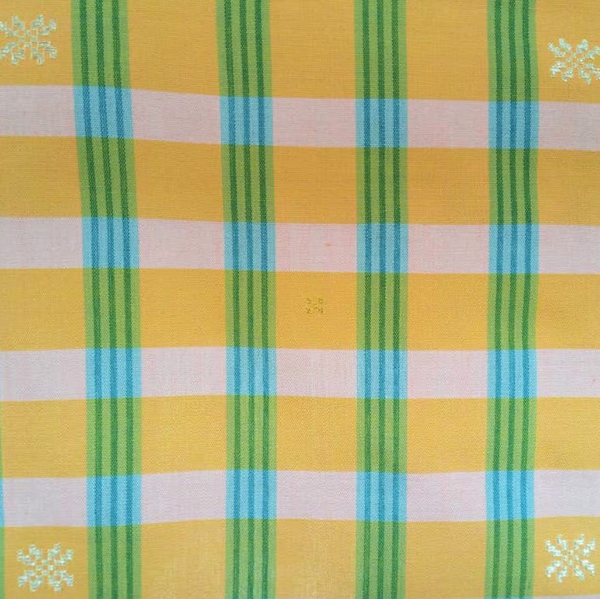
PUSAT TENUNAN SONGKET KAMPUNG RAJANG
Pusat Tenunan Songket Kampung Rajang based in Tanjung Manis, Sarawak and headed by Hajah Sa’anah Haji Suhaili aims to expand the appreciation for their unique Rajang songket whilst increasing economic activities for women in the area, thus contributing to the Kampung Rajang economy. For the TENUN Fashion week, they are collaborating with designer Harizan Khaider with his inspiration drawn from the city of St Tropez, France and the art of skateboarding wear.
FB: Songket Tenun Rajang by Hjh Saanah
IG: @harizankofficial
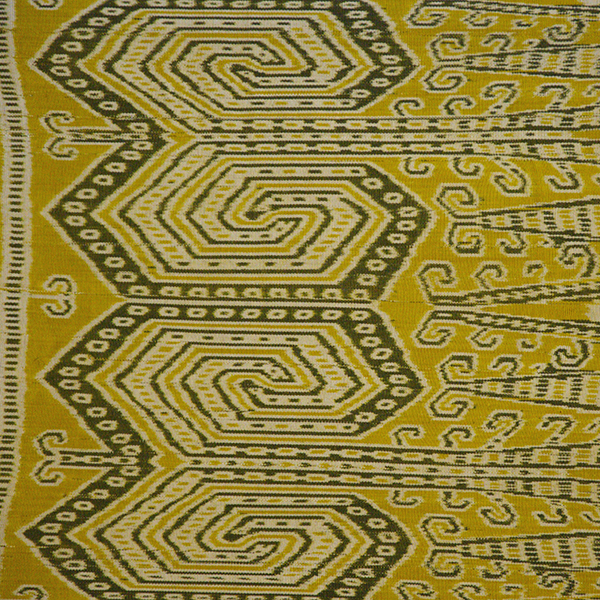
RUMAH GARE
This Iban longhouse community in the region of Ulu Kapit, Sarawak produce pua kumbu fabrics in warp ikat using backstrap looms. They are descended from many generations of pua kumbu weavers. Today, they continue to practise ancient customs in their fabric production, including the Ngar ritual to mordant their threads and using only natural dyes from plants found in the vicinity of their longhouse. Several internationally recognized and award-winning weavers reside within this community. Rumah Gare will be collaborating with designer Edric Ong for this collection.
W: www.edricong.com
IG: @ong.edric
FB: Edric Ong
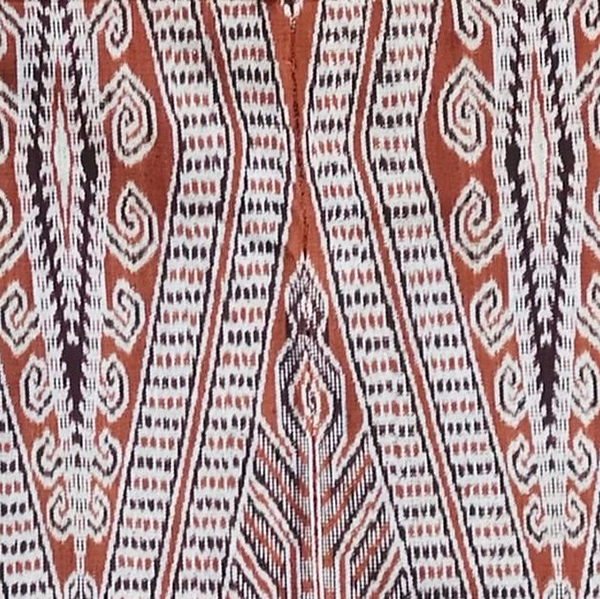
RUMAH LASO
The women of this Iban longhouse community by Nanga Entawau in Ulu Kapit, Sarawak produce hand-loomed textiles using silk or cotton yarns coloured with the mengkudu (Morinda citrifolia) natural dye, harvested from the rainforests of Borneo. These treasured textiles, woven with traditional motifs, are used by Iban communities for ceremonial or ritual purposes and now adapted for use in dress. Rumah Laso Nanga Entawau will be collaborating with designer Datin Melia Gelen for this collection.
IG: @demlyapua
FB: De’ Mlya Pua Kumbu
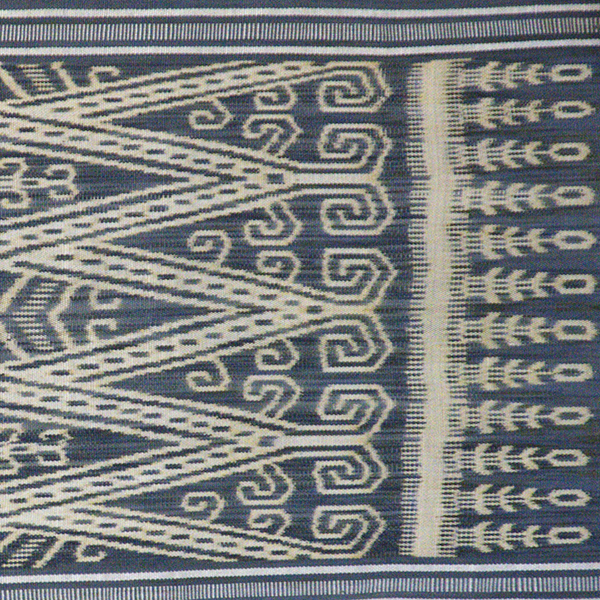
RUMAH RICHARD
Rumah Richard, on the banks of Sungai Emang on the outskirts of Kapit, Sarawak, is one of the few remaining large longhouses build entirely from wood. This Iban community produce warp ikat pua kumbu of silk, cotton and bamboo yarns using backstrap looms and natural dyes. Rumah Richard will be collaborating with designer Melinda Omar for this collection.
FB: Melinda Omar
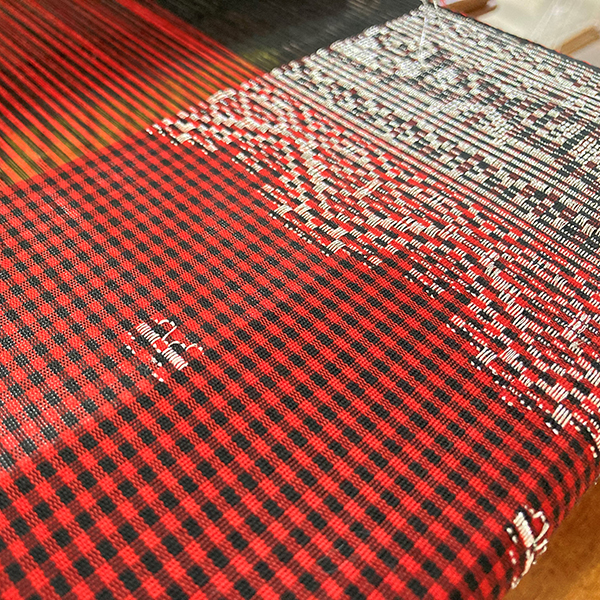
SERI GEDONG SONGKET
Seri Gedong, founded by Ramtiniwaiti Ramlee, is a weaving community of ten weavers in Kampung Gedong, Simunjan, Sarawak. It aims to preserve the unique songket weaving tradition of Sarawak with each piece woven traditionally and with its special characteristics which represent Sarawak’s values and culture. Seri Gedong is known for Maskota, a motif of a gold-plated crown, which has been used in such weavings passed down through time.
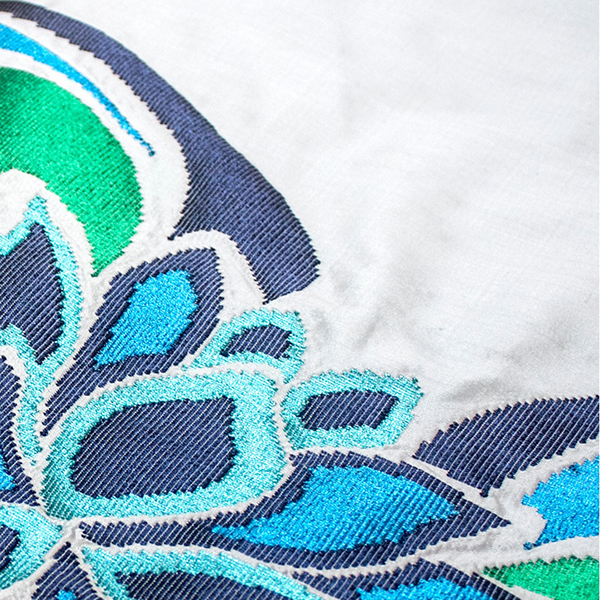
TANOTI
This weaving atelier in Kuching, Sarawak houses young weavers and produces both traditional and contemporary textiles by applying the Malay songket or supplementary weft technique. At Tanoti House, a lot of experimentation and innovation takes place. This community continues to push the boundaries to the woven textile, producing unconventional handloomed items such as its Leatherweaves and applying unconventional fibres such as alloys or rattan. Tanoti also works with indigenous artisans in rural and remote communities across Sarawak, Malaysian Borneo, producing basketry and beaded products using traditional craft techniques.
W: www.tanoticrafts.com
IG: @tanoticrafts
FB: Tanoti
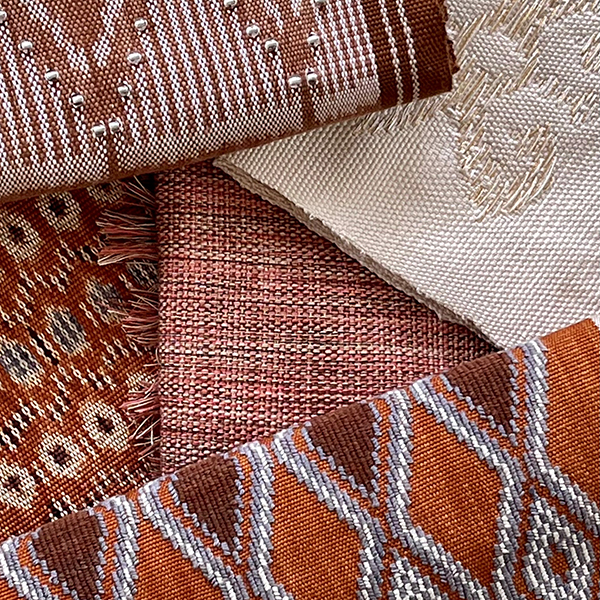
TUN JUGAH FOUNDATION
Tun Jugah Foundation, based in Kuching, Sarawak, is a charitable organization dedicated to research, development and the preservation of Iban oral tradition, language and the traditional art of weaving. It houses a museum with a large textile collection. Its weaving gallery serves as a platform for conducting free classes open to the public and university students seeking a place for internship. Weaving techniques taught are ikat tie-dye; Iban sungkit, a supplementary weft-wrapping technique; and anyam or karap, a supplementary weft-weave technique. Aside from its own weaving team, the Foundation is affiliated to several longhouse weavers since the 1990s. The Foundation has explored and ventured into the contemporary world of arts and crafts, keeping in mind the need to retain the traditional aspects while adapting to current trends, as reflected in this collection.
W: www.tunjugahfoundation.org.my
IG: @tunjugahfoundation
IG: @olahidup
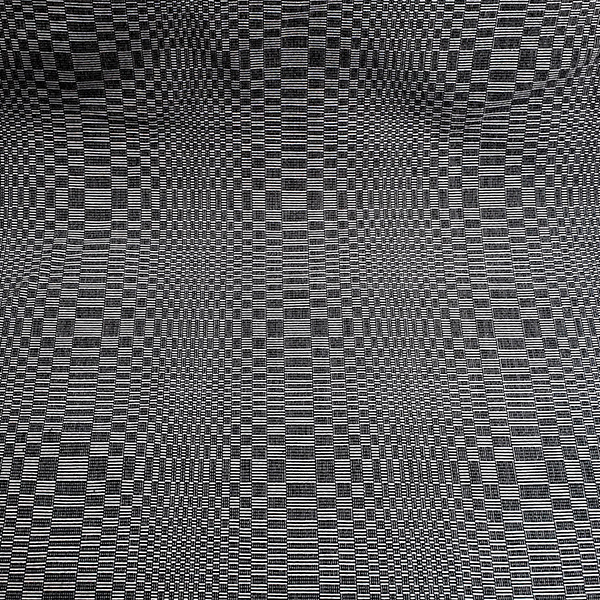
CUSTOMMADE CRAFTS CENTER, WITH N. ARDANIEL'S LOOMWEAVING AND AL JAMELAH WEAVERS ASSOCIATION
Two weaving communities are featured in this collection – N. Ardaniel’s Loomweaving of La Paz, Abra for binakol fabrics and Al Jamelah Weavers Association of Maguindanao for inaul textiles. N. Ardaniel’s Loomweaving, based in the Cordillera, create handwoven products using traditional looms. The dizzying patterns of binakol are said to ward off evil spirits. The Maguindanao are a Muslim indigenous cultural community in Central Mindanao for whom weaving is a spiritual exercise and one of the highest forms of artistic expression. The inaul, the Maguindanao traditional fabric, depicts the community’s rich Muslim culture and heritage with its striking colours, intricate brocade patterns, and use of metallic threads. Both these communities fall under the umbrella of the CustomMade Crafts Center. The designer for this collection is Jean Dee.
W: www.cmcrafts.org
IG: @custommadecraftscenter
FB: CustomMade Crafts Center
W: katalonan.com
IG: jean.a.dee
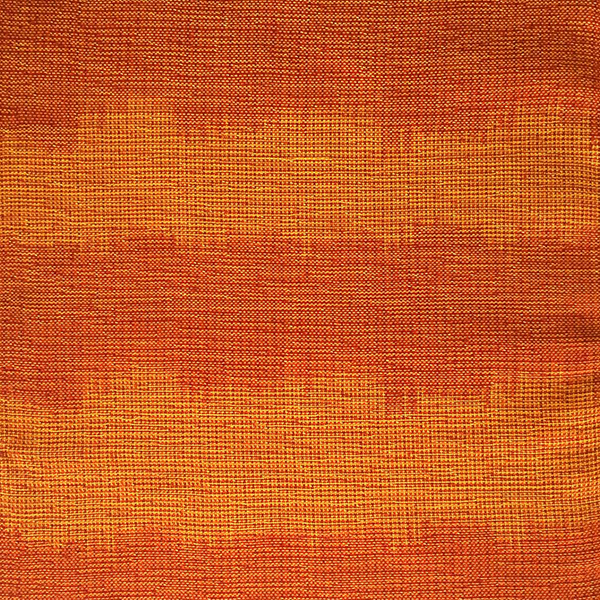
NARDA’S HANDWOVEN ARTS AND CRAFTS
The hand weaving industry in the Philippine Cordilleras today was popularized by Narda’s along with other enterprises. Along with the other weaving groups existing today, Narda’s maintains back strap weaving for culturally specified purpose fabrics and the upright loom for commercial purposes. The upright loom is adopted by the Cordillerans, or more popularly known as Cordis, from the lowlander Ilocano loom. Narda’s produces proudly Philippine Cordilleran products valued both by a domestic audience and by internationals themselves who considered them to be chic and fashionable heirloom items to own.
W: nardas.com
IG: @nardasph
FB: Narda’s Handwoven Arts and Crafts
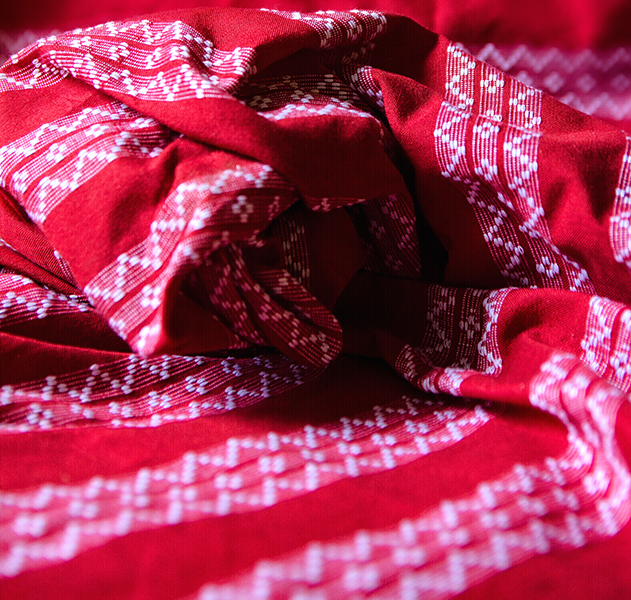
SALNGAN LIVELIHOOD MULTI-PURPOSE COOPERATIVE
Salngan Livelihood Multi-Purpose Cooperative is a handloom weaving association founded in 2003 in a small village in Salngan, Oton, Iloilo province, Panay Island, central of the Philippine archipelago. Iloilo was the textile capital of the Philippines during the Spanish colonial period. The group has 35 members, ranging from 17 to 82 years old. These women handloom weavers weave the traditional hablon, characterized by being chameleon-like because it changes its colours in different angles. It is inserted with indigenous pattern in geometrics and stripes. They also weave the patadyong, a tube dress in colourful checkered pattern. They customize weaving patterns in natural fibres such as silk, raffia, piña and abaca. The cooperative collaborates with a design and marketing arm, Nautilus PJ Arañador and Panublix by Noreen Bautista, respectively.
W: www.slmpchablonproducts.com
FB: Salngan Multi-Purpose Cooperative
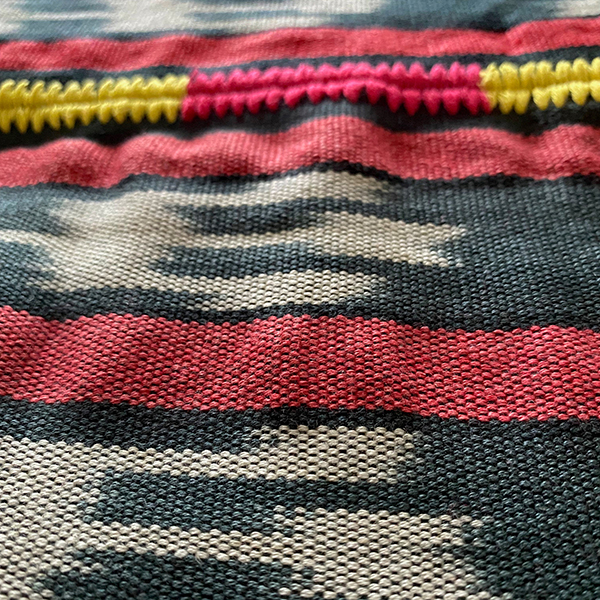
SKY WEAVERS, WITH IFUGAO WEAVERS
Sky Weavers is a cultural enterprise that works with indigenous weavers from Ifugao, Philippines to create clothing pieces and accessories that are wearable in the modern age. Their weavers use the backstrap loom to create ikat textile with patterns and techniques that have been passed down through generations. Their goal is to be able to bring Ifugao culture and textiles to the world stage, and to uplift the lives of weavers in Ifugao.
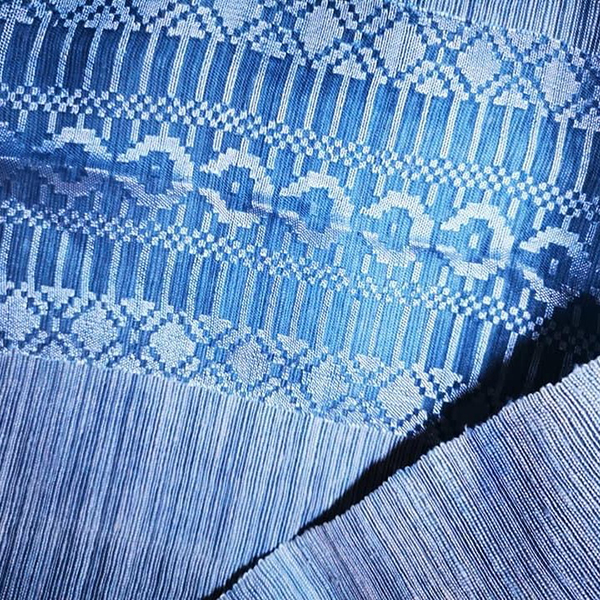
RIVERLAND FARMERS AND WEAVING COMMUNITIES
The Riverland Farmers and Weavers Communities is a network of people that contributes to the value chain of the piña textile production in the province of Aklan, Philippines. Within each family, the father plants the piña, the mother is the fiber extractor and the older children are the fiber knotters, ensuring sustainability of livelihood at the grassroots and a continuous supply of raw materials in its value chain to support weavers, dyers, embroiderers and so on. The piña is a fine gossamer fabric that uses the fibers from the leaves of the pineapple plant, delicate and transparent yet strong and versatile. Anna India Legaspi is the designer for this collection.
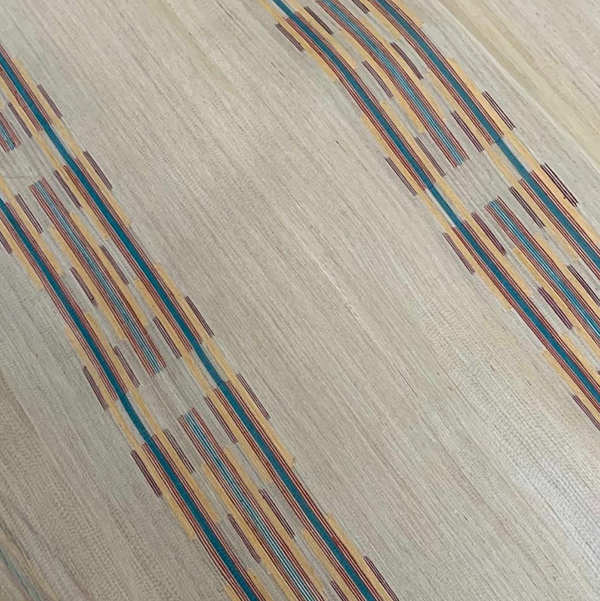
RURUNGAN SA TUBOD FOUNDATION
Each piece from the Rurungan Sa Tubod Foundation (RSTF) is meticulously woven by hand, with techniques anchored in tradition but in styles made for the modern world. This blended concept brings together a creative network from all over Palawan, with each partner community specializing in different types of weaving. The whole process, from plant to product, is one of collaboration and open communication between the communities that provide materials, designers, and artisans, which produces pieces-with-intention representative of the hands behind them. RSTF works with a variety of materials such as piña, abaca, silk and cotton to create thoughtful handwoven apparel and continues to experiment further in tapestry and homeware.
W: rurungancollective.com
IG: @rurunganph
FB: Rurungan Sa Tubod Foundation
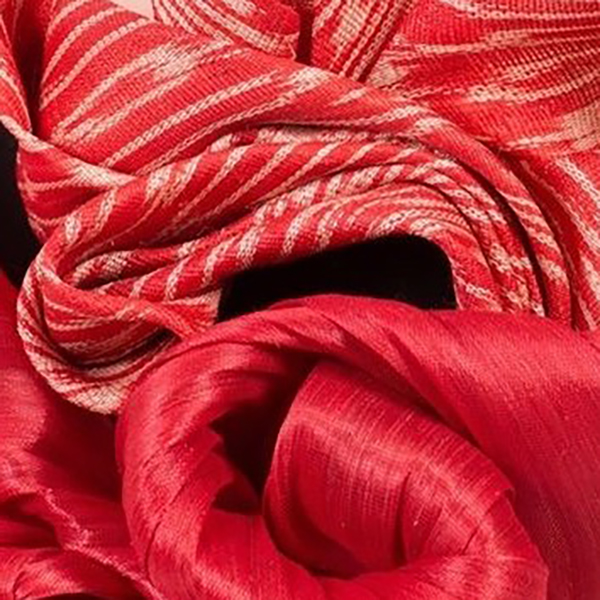
TUPA NG BARAS
The Tupa Ng Baras weavers of the Baras municipality of Catanduanes weave using banana fibres sourced from the wild or grown by local farmers on the island. The lengthy process involved to produce this fiber includes stripping, sorting, spinning, knotting and dyeing with natural dyes before it can be woven into fabric. The material is woven into fabric using handlooms made of wood pieces that keep the warp (vertical) threads tight and straight so that horizontal threads can pass through easily. These precious fabrics are made into contemporary fashion, Filipina wraps and accessories. Tupa Ng Baras will be collaborating with designer Ditta Sandico for this collection.
W: www.dittachannel.com
IG: @dittasandico
FB: Ditta Sandico
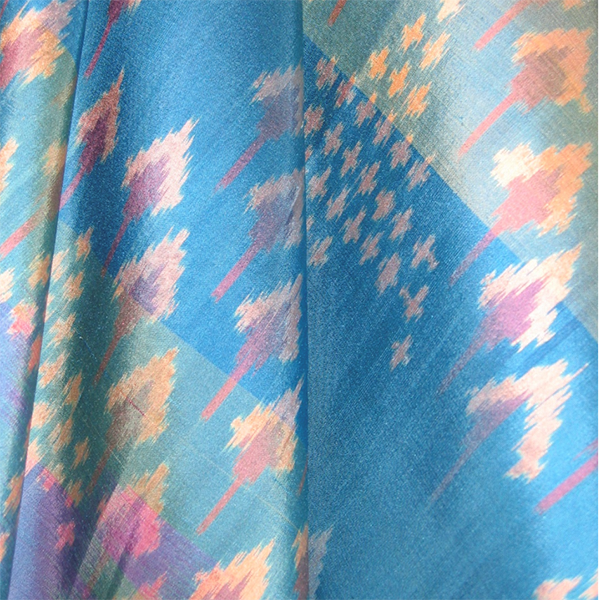
CHABATIK
Chabatik was established to conserve traditional weaving skills passed down from generation to generation. Chabatik currently works with two groups of weavers, one in Baan Huay Khi Nu and the other in Baan Phu Pha Maan, Khon Kaen province. Chabatik seeks to create designs acceptable to modern community using traditional weaving methods, ultimately striving for innovation while keeping traditions. Their designers have created a special weaving method known as mud-mee son (double ikat) used to create designs fit for modern society without losing their traditional essence. Chabatik are collaborating with Sasiwan Dumrongsiri for this collection.
W: www.chabatik.com
FB: Chabatik
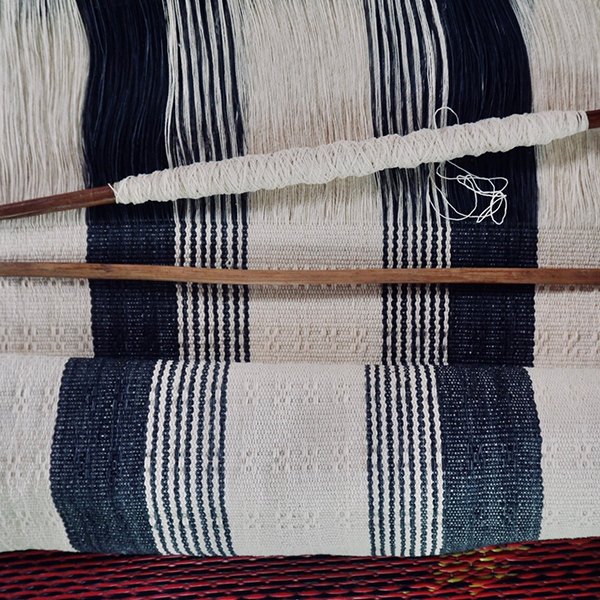
DE QUARR, WITH KAREN PWO WEAVERS
De Quarr, in Chiang Mai, headed by Yujarej Somana, collaborates with local artists and communities to create unique products, thus uplifting their well-being and ensuring the continuation of the cultural heritage of these communities. This collection “Chiang Mai Southern” is created in four villages in Chiang Mai’s southern area – Omkoi, Hod, San Patong and Sarapee district: four for dyeing, two for weaving and sewing. This collection, consisting of relaxed wear, is a reflection of ethical fashion and a sustainable supply chain that De Quarr seeks to champion.

HEMP SAITHONG
Nuansri Promjai of Hemp Saithong (Golden Sand Hemp Fiber Community Enterprise) learnt to knit using natural hemp material for her personal use. Over time, a group of interested people from her village in Maerim, Chiang Mai Province, Thailand gathered to work with embroidering, knitting, threading and developing products from hemp, a plant that grows in the highlands of northern Thailand. Unwoven hemp was also developed and combined with knitting to create garments, and other accessories like hats, coloured with natural dyes from teak leaves, krakok leaves, kwao flowers and ebony fruits.
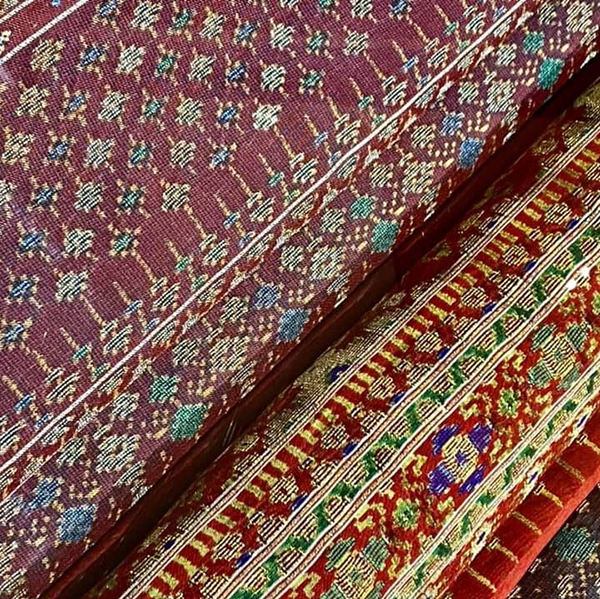
KHAMPUN WEAVING CENTRE
Baan Khampun in Ubon Ratchathani, centre of mud-mee (weft ikat) textile weaving in Northeastern Thailand, was established over 40 years ago by Mdm. Khampun Srisai. Today, her son Meechai Taesujariya continues this unique heritage of silk weaving by not only creating new patterns and experimenting with a combination of other weaving techniques but by reviving previously lost old silk textile motifs. He was named an outstanding master of Ubon Ratchathani in 2016 and honoured as a Master Artisan of Thailand by the Support Arts and Crafts International Center of Thailand. The luxurious textiles of Khampun with silk mud-mee combined with gold thread brocades and supplementary weft weaving are now sought after by royalty and high society.
FB: Khampun Ubon
IG: @proudofkhampun
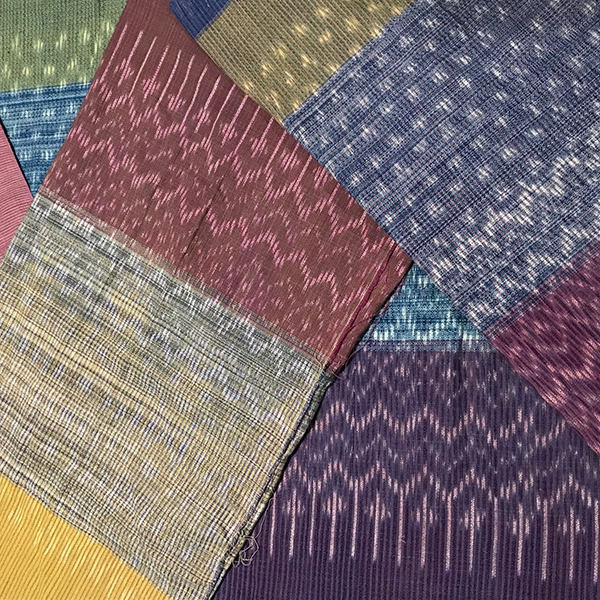
MANN CRAFT, WITH THE KRAM TONG HANDICRAFTS GROUP
The Kram Tong Handicrafts Group was founded in 2013 by Prach Niyomkar, also the founder of the Mann Craft brand. Kram Tong means ‘golden indigo’, in reference to the precious colour from nature. The group began with five local weavers in Ban Nanokkow, a village in Sakon Nakhon Province, Northeast Thailand, weaving both traditional and contemporary textiles, such as scarfs, sarongs and home décor items, using natural dyed cotton. Over the past few years, more local weavers in the province have joined the group, with their weaving techniques of weft ikat, supplementary warp and continuous supplementary weft creating textiles of wearable art. At present, Kram Tong Handicrafts Group has 15 members and weaves textiles for the Mann Craft and Kram Tong brands.
IG: @mann.craft
FB: Mann Craft
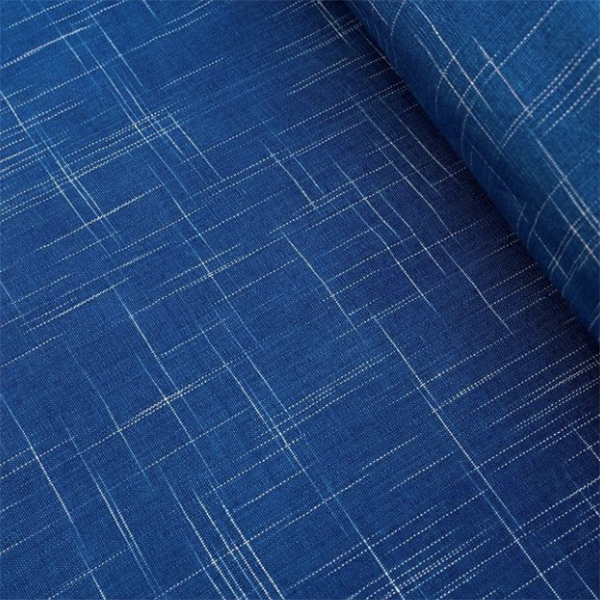
TOHSANG COTTON VILLAGE
Tohsang Cotton Village is a collective of design spaces that houses the weaving traditions of the Khongjiam community in Ubon Ratchathani, breathing life into local artisanship and artistry that might otherwise be forgotten. Set on the banks of the Mekong River, this community farms natural cotton which is hand-picked and nurtured into bespoke textiles with the use of traditional floor looms, each with a cultural narrative of their own. Products range from raw yarn to metered fabric, to finished products made for custom orders. Tohsang Cotton Village aims to empower and improve the lives of low-income women weavers, central to their eco-system.
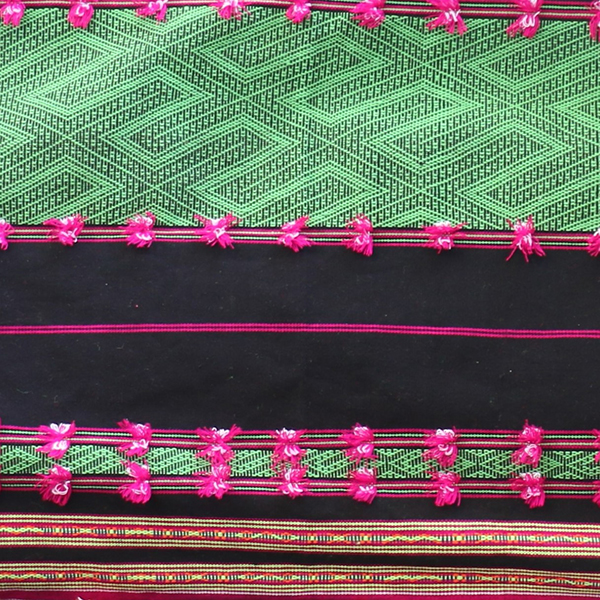
TRADITIONAL WEAVING NETWORK OF THE CENTRAL HIGHLANDS VIETNAM
This network was created to preserve and revive the traditional weaving heritage of local communities. Their textiles are handwoven by six ethnic minority groups in Central Vietnam – Ta Oi, Cotu, Gie Trieng, Bana, E De and Ma – who weave on backstrap looms significantly different from each other. Cloths are patterned by hanging colourful threads vertically to create geometric motifs during weaving which stand out from their dark background. Cotu and Ta Oi also weave beads into the textiles to create unique motifs.

COLOR SILK (CAMBODIA)
The Color Silk Foundation, based in Phnom Penh, started in 2009 with 10 weavers. Today, the award-winning foundation works with more than 600 weavers, over seven villages in the Takeo province in Cambodia, with 250 farmers who grow mulberry leaves needed for silk production. The Foundation aims to empower women in poor rural communities and to preserve the silk weaving traditions of Cambodia, providing training and workshops in sericulture, dyeing and weaving. Color Silk (Cambodia) produce multiple handwoven products from such as clothes, scarves, fashion items and fabrics made from cotton, silk or mixed fibers using Cambodian ikat traditional designs combined with modern design concepts.
W: colorsilkcommunity.wix.com/colorsilk-cambodia
IG: @colorsilk_cambodia

KEI KHMER
TEXTILE COMMUNITY
Kei Khmer Textile Community was established in Phnom Penh to preserve traditional designs as well as the ikat weaving and natural dyeing skills in their community. The organization supports village weavers, enabling them to earn an income in addition to rice farming, and thus to allow weaving activities to continue to flourish. In seeking to preserve the traditional skills of handweaving, Kei Khmer has researched many kinds of natural resources and old designs of Khmer traditional patterns whilst new patterns have also been created to appeal to the younger generation.

ASPPUK
The weavers of ASPPUK, based in Lombok and West Sumatra, are women victims of violence, disaster victims, female heads of families and migrant workers. Their textiles are woven in traditional ways, dyed with natural dyes from plants. Some feature recycled materials, such as threads from recycled plastic waste. These weavers participate in preserving local culture and through their economic activities, are able to influence women in these rural communities that there are alternatives to travelling abroad as migrant workers. By supporting these weavers through their products, one contributes to culture preservation, the strengthening of the capacity of women at the grassroots and helping to care for the environment. For this collection, ASPPUK is collaborating with designers Merdi Sihombing and Risza Novianty Sao Sao.
W: asppukgallery.or.id
IG: @dpuk_store
FB: Perempuan Pelestari Tradisi

BENGKALIS COMMUNITY OF THE PEATLAND AND MANGROVE RESTORATION AGENCY (BRGM)
The Bengkalis Women Weaving Community is a group of at least 50 weavers in Bengkalis, Riau established in 2007 but with weaving roots in the era of the Siak Kingdom (1723 BC). Bengkalis weaving is also known as lejo awal, with motifs representing respective philosophies in Malay culture. As there are more than 200 hectares of pineapple plantations in Bengkalis. pineapple leaves have been processed into textile fibers for use by the weavers to produce a soft, high-quality textile, coloured with natural dyes. This collection is designed by Ahmad Nur Hasyim of Kekan Wastra Gallery.
IG: @bengkalisweavingcommunity
FB: Kelompok Penenun Bengkalis

BORU, WITH JABU BONANG
BORU, collaborating with the Jabu Bonang weaving community in Siantar, North Sumatra, specialises in inspired pieces and designs from traditional Batak cloths and motifs or ulos. By doing so, they seek to introduce Batak culture to contemporary apparel, accessories and home decor. BORU is an advocate of slow fashion and strives to uphold values that champion social responsibility, environmental care and empowerment of local communities. BORU’s designs use natural dyes, with colour experimentation continuously explored to create a variety of future products that do not require synthetic colours.
W: borugoods.gom
IG: @borugoods
IG: @jabu.bonang

CCD-NL, with Wedor Hadomi and Ina Manenu
The Center for Cultural Development the Netherlands (CCD-NL) is a Dutch non-profit organization based in Rotterdam focused on fostering cultural development and preserving cultural heritage. CCD-NL regularly organizes webinars and workshops related to ikat weaving to ensure that this tradition is preserved in its original form, as well as through integration into ‘new’ designs that honor its cultural integrity. CCD-NL works with artisans in East Nusa Tenggara (NTT), Indonesia, specifically collaborating with weaving groups Wedor Hadomi in Belu, West Timor and Ina Manenu in Rote-Ndao, and with the designers Selviana Boi Dao (Belu), Lidwina Vivawaty Ng (Belu), and Marsha Fattu (Rote-Ndao).
W: www.ccd-nl.org/
IG:@ccd_nl
IG:@ikat.nl

KMANA, WITH THE WEAVERS OF NUSA PENIDA
Rang rang is a unique textile woven in Nusa Penida, a small island next to Bali. Each piece is woven on upright hand looms with striking geometrical patterns. These textiles were worn as sarongs for Hindu ceremonies. The technique and fabric were on the verge of extinction, but now revived thanks to the work of craft NGOs and brands such as Kmana. The production of rang rang is now the main job for several women, complementing their livelihoods as farmers and seaweed growers. The textile is made from cotton and dyed with natural dyes from plants grown or foraged locally to give beautiful soft tones as well as more vibrant colours.

LUCY’S BATIK, WITH THE WEAVERS OF TUBAN
Lucy’s Batik retails Indonesian arts and crafts, as well as hold educational and lifestyle events and resources in Jakarta. One of their focus areas is Kerek, Tuban where they work with ten weavers who weave cotton cloth which is then dyed using natural dyes and then batiked to apply patterns using a wax resist. Batik Tuban is unique as the batiking is done on hand-woven, rather than machine-produced, cloth. Each textile made for use in this area is created for a specific purpose, to be worn by a person of a particular age, social or residential group, to serve in life-cycle events as well as to act as a focal point in agricultural ceremonies or curing rites.
IG: @lucysbatik

NOESA, WITH WATUBO
Noesa reimagines textiles from the island of Flores, East Indonesia – by taking segments from traditional patterns and presenting these in new colour combinations, they remodel these textile traditions into functional fashion products. Noesa partners with Watubo, a community of ikat weavers in Watublapi village in Sikka regency. This collective of 26 ikat weaving artisans aspires to conserve their local art and cultural heritage, whilst increasing the prosperity of their communities. The community also seeks to work with respect and care for the environment, using natural dyes and sustainable materials. Together, this partnership highlights culture, shares local wisdom and makes this accessible to all through their products.
W: noesa.co.id
IG: @noesa.co.id
IG: @watubo
FB: Noesa

RUMAH RAKUJI, WITH PALU’E WEAVERS
Rumah Rakuji describes itself as a shelter for Indonesian culture, arts and craft. Founded by Myra Widiono, they have partnered with various artisan communities, including those in the remote reaches of the archipelago. Palu’e is a small island accessible by a sea journey of six hours from the coast of Flores in East Indonesia. The island is dominated by a volcano that erupts every 30 years or so, the last time in 2013. This has resulted in some of the population now displaced and living on Flores. This collection features the handwoven ikat textiles of the island, woven by weavers on Palu’e as well as some pieces by the former inhabitants of the island now relocated and residing in Nangahore, Flores.
W: www.rumahrakuji.com
IG: @rumahrakuji

RUMAH RAKUJI, WITH TUNAS MEKAR BATUBARA
The weaving community of Tunas Mekar Batubara in the village of Tanjung Isuy, East Kalimantan are from the Dayak Benuaq ethnic group. Their traditional handwoven textiles are known as ulap doyo, produced using doyo fibre from Curculigo latifolia leaves. The community preserves and perpetuates this craft from fiber harvesting and producing the yarn to the usage of natural dyes, through to the weaving process. Rumah Rakuji has been a consistent partner to the community, introducing innovative approaches to this textile. This collection, designed by Emmy Thee, showcases a contemporary take on this traditional yet versatile fabric.
W: www.rumahrakuji.com
IG: @rumahrakuji

SEKAR KAWUNG FOUNDATION
Sekar Kawung Foundation is a social enterprise that works closely with local artisans to create sustainable products for contemporary urban consumers using their deep cultural knowledge on how to use natural resources carefully. For this collection, weft decorative hand-loomed textiles known as tenun gedog kembangan made from home-grown cotton by women weavers in Tuban, East Java will be featured. These are some of the most ancient types of woven cloth developed in Tuban before batik became popular in later centuries. Weavers in Tuban make a rich variety of textiles, including a very simple ikat and plain cloth then decorated using batik. This collection is designed by Wahyo Abraham.
W: sekarkawung.com
IG: @sekarkawung_id
IG: @nawanthi.indonesia

SORHA NAULI ,WITH THE WEAVERS OF PAPANDE VILLAGE
Sorha refers to the spinning wheel whilst nauli means beautiful in the Batak Toba language. Sorha Nauli currently works with ten artisans in Papande Village, Muara District in the North Sumatra province. Papande is situated on Sibandang Island in Lake Toba, accessible by boat from the capital of the Muara district. In ancient times, weavers on this island only wove ulos cloth for traditional ritual purposes. With the passage of time and the increasing demand for fashion needs, weavers are now adapting the use of these textiles. Cotton thread is used whilst natural dyeing is being revived once again.

TOBATENUN, WITH JABU BONANG
Tobatenun is the distribution platform of PT Toba Tenun Sejahtra, a social enterprise founded in 2018 working to revitalise and preserve threatened textile traditions while tackling social issues in its related communities. Weavers and artisans partnered with Tobatenun gather and work through the community home, Jabu Bonang, located in the city of Pematang Siantar, North Sumatra. Jabu Bonang is affiliated with over 50 weavers from Siantar and the villages of Hutaraja and Lumban Suhi-suhi in Samosir. They weave ulos, the traditional textile at the heart of Batak culture. Tobatenun encourages the use of natural dyes and fibers and focuses on the use of gedogan or back-strap looms instead of other non-traditional methods currently saturating the mass-produced market.
W: www.tobatenun.com
IG: @tobatenun
IG: @jabu.bonang

TORAJAMELO
TOAJAMELO is an ethical slow lifestyle brand that works with rural and remote women-led weaving collectives across Indonesia to preserve and sustain the cultural heritage of weaving. The brand works with weavers in multiple locations in Sulawesi and East Indonesia. This collection features the work of 30 weavers in partner communities in Lembata as well as from Adonara and Mamasa. The range blends heritage weaving with modern cuts, featuring indigenous techniques and motifs, such as the penetoten, mowak and palawa, whilst emphasizing practicality, functionality and utility.
W: torajamelo.com
IG: @torajamelo
FB: TORAJAMELO

KATU VILLAGE OF HOUYHOUN
There are 50 weavers among the women of the Katu ethnic group of Houyhoun Village who continue the ancient tradition of weaving on foot-braced, backstrap looms. The weavers use natural dyes to colour their cotton, banana fibre and silk threads, using complementary warp, weft twining, supplementary warp and complex weft twining to create patterns. Complex designs are also made using beads. The community now designs clothes from traditional textiles and will also be collaborating with designer Zoe Armeniades for TENUN Fashion Week.

KHANG
KHANG, based in Vientiane, is a house of Lao textile and fashion, founded by Viengkham Nanthavongdouangsy, a master weaver and a leading fashion designer in Laos. KHANG accommodates 30 permanent women weavers whilst working also with weaving communities in different provinces in Laos, helping them to develop in quality and design. At KHANG, traditional and modern designs are crafted using ancient weaving techniques and only natural materials are selected for use. Over the past 20 years, Viengkham has trained many hundreds of people locally and internationally on weaving and natural dyeing, and has written and published a number of books on Lao textiles.
IG: @khang.laos
FB: KHANG

MA TÉ SAI
Ma Té Sai, based in Luang Prabang, works with artisans from many ethnic groups in Laos, including Lao, TaiLeu, Hmong, Akha, Katu, Yao, Lentan, and Khmu. Each group creates items that embrace and demonstrate their rich traditions and cultures. Since 2013, Ma Té Sai has been training various communities around Laos to sew – these include the TaiLeu women in Nambak district, Luang Prabang; Sengsavang, a centre for women at risk of trafficking in Savannakhet, South Laos; and women from Tai Daeng, Tai Dam, Lanten and Hmong ethnic communities in Luang Namtha, Northern Laos. These communities use traditional textiles produced in their areas, converting them into garments and homewares. By empowering women to sew, Ma Té Sai is able to support village production whole-heartedly, and to co-create modern handcrafted items for your lifestyle.
W: matesai.com
IG: ma_te_sai
FB: Ma Té Sai

MULBERRIES
Mulberries, based in Xieng Khouang Province, is a Lao Fair Trade Organic Silk Organization, empowering Lao villagers through sustainable development projects. Working with 2,000 villagers in five provinces in Northern Laos, the communities are encouraged to grow mulberry trees, rear silkworms, reel, weave and dye silk in a sustainable and environmentally friendly way. The deeply-rooted cloth patterns of Laos have now been adapted for use in their present style, with a different meaning to each motif and varying colors according to the weaver’s ideas and personal taste.
W: www.mulberries.org
FB: Mulberries

TAI LUE VILLAGE OF NAYANG
The Tai Lue of Nayang Village follow their ancestors’ tradition of weaving cotton dyed with natural materials. Some continue to cultivate and spin cotton, and many grow plants for dyeing, such as indigo, or forage for other ingredients in the neighbouring forest. Tai Lue weavers utilize continuous and discontinuous supplementary weft and dovetail tapestry designs. The village renowned for natural-dyed hand-spun cotton fabric in numerous colours, has some 150 women weaving in North Nayang village and 120 in South Nayang village. This community will be collaborating with designer Marika Feinsilber for this collection.

INSTITUT KRAF NEGARA
Institut Kraf Negara (IKN, the National Crafts Institute) in Selangor was established to preserve Malaysia’s various craft traditions, passing this on to new generations. IKN’s weaving community consists of young weavers interested to learn how to weave Malay songket and limar, in ways that can produce designs which can keep up with current fashion trends. Featured in this collection are the songket teknik ikat loseng, songket teknik sapuran and songket teknik beragi.
W: www.ikn.gov.my
IG: myikn_

KAMPUNG PULAU KELADI WEAVERS
This collection of songket is handwoven by Hajjah Nortipah and her daughter, part of a community of weavers located in the village of Kampung Pulau Keladi in Pahang. The community strives to preserve the heritage of their handwoven songket passed down from their ancestors. This collection for TENUN will be designed by Bill Keith.

MEMORYIE CRAFT ENTERPRISE
Memoryie Craft is a group of four weavers based in Keningau, Sabah. They will be showcasing weavings from the Rungus ethnic group as well as songket dastar, also known as irranun. Rungus textiles are woven on backstrap looms and reflect the traditional beliefs of the community – for instance, black is the favoured colour as it is believed to be a symbol of power or a divine colour which can protect the wearer from evil beings.
FB: Memoryie Craft

PUSAT TENUNAN SONGKET KAMPUNG RAJANG
Pusat Tenunan Songket Kampung Rajang based in Tanjung Manis, Sarawak and headed by Hajah Sa’anah Haji Suhaili aims to expand the appreciation for their unique Rajang songket whilst increasing economic activities for women in the area, thus contributing to the Kampung Rajang economy. For the TENUN Fashion week, they are collaborating with designer Harizan Khaider with his inspiration drawn from the city of St Tropez, France and the art of skateboarding wear.
FB: Songket Tenun Rajang by Hjh Saanah
IG: @harizankofficial

RUMAH GARE
This Iban longhouse community in the region of Ulu Kapit, Sarawak produce pua kumbu fabrics in warp ikat using backstrap looms. They are descended from many generations of pua kumbu weavers. Today, they continue to practise ancient customs in their fabric production, including the Ngar ritual to mordant their threads and using only natural dyes from plants found in the vicinity of their longhouse. Several internationally recognized and award-winning weavers reside within this community. Rumah Gare will be collaborating with designer Edric Ong for this collection.
W: www.edricong.com
IG: @ong.edric
FB: Edric Ong

RUMAH LASO NANGA ENTAWAU
The women of this Iban longhouse community in Ulu Kapit, Sarawak produce hand-loomed textiles using silk or cotton yarns coloured with the mengkudu (Morinda citrifolia) natural dye, harvested from the rainforests of Borneo. These treasured textiles, woven with traditional motifs, are used by Iban communities for ceremonial or ritual purposes and now adapted for use in dress. Rumah Laso Nanga Entawau will be collaborating with designer Datin Melia Gelen for this collection.
IG: @demlyapua
FB: De’ Mlya Pua Kumbu

RUMAH RICHARD
Rumah Richard, on the banks of Sungai Emang on the outskirts of Kapit, Sarawak, is one of the few remaining large longhouses build entirely from wood. This Iban community produce warp ikat pua kumbu of silk, cotton and bamboo yarns using backstrap looms and natural dyes. Rumah Richard will be collaborating with designer Melinda Omar for this collection.
FB: Melinda Omar

SERI GEDONG SONGKET
Seri Gedong, founded by Ramtiniwaiti Ramlee, is a weaving community of ten weavers in Kampung Gedong, Simunjan, Sarawak. It aims to preserve the unique songket weaving tradition of Sarawak with each piece woven traditionally and with its special characteristics which represent Sarawak’s values and culture. Seri Gedong is known for Maskota, a motif of a gold-plated crown, which has been used in such weavings passed down through time.

TANOTI
This weaving atelier in Kuching, Sarawak houses young weavers and produces both traditional and contemporary textiles by applying the Malay songket or supplementary weft technique. At Tanoti House, a lot of experimentation and innovation takes place. This community continues to push the boundaries to the woven textile, producing unconventional handloomed items such as its Leatherweaves and applying unconventional fibres such as alloys or rattan. Tanoti also works with indigenous artisans in rural and remote communities across Sarawak, Malaysian Borneo, producing basketry and beaded products using traditional craft techniques.
W: www.tanoticrafts.com
IG: @tanoticrafts
FB: Tanoti

THE TUN JUGAH FOUNDATION
The Tun Jugah Foundation, based in Kuching, Sarawak, is a charitable organization dedicated to research, development and the preservation of Iban oral tradition, language and the traditional art of weaving. It houses a museum with a large textile collection. Its weaving gallery serves as a platform for conducting free classes open to the public and university students seeking a place for internship. Weaving techniques taught are ikat tie-dye; Iban sungkit, a supplementary weft-wrapping technique; and anyam or karap, a supplementary weft-weave technique. Aside from its own weaving team, the Foundation is affiliated to several longhouse weavers since the 1990s. The Foundation has explored and ventured into the contemporary world of arts and crafts, keeping in mind the need to retain the traditional aspects while adapting to current trends, as reflected in this collection.
W: www.tunjugahfoundation.org.my
IG: @tunjugahfoundation
IG: @olahidup

CUSTOMMADE CRAFTS CENTER, WITH N. ARDANIEL'S LOOMWEAVING AND AL JAMELAH WEAVERS ASSOCIATION
Two weaving communities are featured in this collection – N. Ardaniel’s Loomweaving of La Paz, Abra for binakol fabrics and Al Jamelah Weavers Association of Maguindanao for inaul textiles. N. Ardaniel’s Loomweaving, based in the Cordillera, create handwoven products using traditional looms. The dizzying patterns of binakol are said to ward off evil spirits. The Maguindanao are a Muslim indigenous cultural community in Central Mindanao for whom weaving is a spiritual exercise and one of the highest forms of artistic expression. The inaul, the Maguindanao traditional fabric, depicts the community’s rich Muslim culture and heritage with its striking colours, intricate brocade patterns, and use of metallic threads. Both these communities fall under the umbrella of the CustomMade Crafts Center. The designer for this collection is Jean Dee.
W: www.cmcrafts.org
IG: @custommadecraftscenter
FB: CustomMade Crafts Center
W: katalonan.com
IG: jean.a.dee

NARDA’S HANDWOVEN ARTS AND CRAFTS
The hand weaving industry in the Philippine Cordilleras today was popularized by Narda’s along with other enterprises. Along with the other weaving groups existing today, Narda’s maintains back strap weaving for culturally specified purpose fabrics and the upright loom for commercial purposes. The upright loom is adopted by the Cordillerans, or more popularly known as Cordis, from the lowlander Ilocano loom. Narda’s produces proudly Philippine Cordilleran products valued both by a domestic audience and by internationals themselves who considered them to be chic and fashionable heirloom items to own.
W: nardas.com
IG: @nardasph
FB: Narda’s Handwoven Arts and Crafts

SALNGAN LIVELIHOOD MULTI-PURPOSE COOPERATIVE
Salngan Livelihood Multi-Purpose Cooperative is a handloom weaving association founded in 2003 in a small village in Salngan, Oton, Iloilo province, Panay Island, central of the Philippine archipelago. Iloilo was the textile capital of the Philippines during the Spanish colonial period. The group has 35 members, ranging from 17 to 82 years old. These women handloom weavers weave the traditional hablon, characterized by being chameleon-like because it changes its colours in different angles. It is inserted with indigenous pattern in geometrics and stripes. They also weave the patadyong, a tube dress in colourful checkered pattern. They customize weaving patterns in natural fibres such as silk, raffia, piña and abaca. The cooperative collaborates with a design and marketing arm, Nautilus PJ Arañador and Panublix by Noreen Bautista, respectively.
W: www.slmpchablonproducts.com
FB: Salngan Multi-Purpose Cooperative

SKYWEAVERS, WITH IFUGAO WEAVERS
Sky Weavers is a cultural enterprise that works with indigenous weavers from Ifugao, Philippines to create clothing pieces and accessories that are wearable in the modern age. Their weavers use the backstrap loom to create ikat textile with patterns and techniques that have been passed down through generations. Their goal is to be able to bring Ifugao culture and textiles to the world stage, and to uplift the lives of weavers in Ifugao.

RIVERLAND FARMERS AND WEAVERS COMMUNITIES
The Riverland Farmers and Weavers Communities is a network of people that contributes to the value chain of the piña textile production in the province of Aklan, Philippines. Within each family, the father plants the piña, the mother is the fiber extractor and the older children are the fiber knotters, ensuring sustainability of livelihood at the grassroots and a continuous supply of raw materials in its value chain to support weavers, dyers, embroiderers and so on. The piña is a fine gossamer fabric that uses the fibers from the leaves of the pineapple plant, delicate and transparent yet strong and versatile. Anna India Legaspi is the designer for this collection.

RURUNGAN SA TUBOD FOUNDATION
Each piece from the Rurungan Sa Tubod Foundation (RSTF) is meticulously woven by hand, with techniques anchored in tradition but in styles made for the modern world. This blended concept brings together a creative network from all over Palawan, with each partner community specializing in different types of weaving. The whole process, from plant to product, is one of collaboration and open communication between the communities that provide materials, designers, and artisans, which produces pieces-with-intention representative of the hands behind them. RSTF works with a variety of materials such as piña, abaca, silk and cotton to create thoughtful handwoven apparel and continues to experiment further in tapestry and homeware.
W: rurungancollective.com
IG: @rurunganph
FB: Rurungan Sa Tubod Foundation

TUPA NG BARAS
The Tupa Ng Baras weavers of the Baras municipality of Catanduanes weave using banana fibres sourced from the wild or grown by local farmers on the island. The lengthy process involved to produce this fiber includes stripping, sorting, spinning, knotting and dyeing with natural dyes before it can be woven into fabric. The material is woven into fabric using handlooms made of wood pieces that keep the warp (vertical) threads tight and straight so that horizontal threads can pass through easily. These precious fabrics are made into contemporary fashion, Filipina wraps and accessories. Tupa Ng Baras will be collaborating with designer Ditta Sandico for this collection.
W: www.dittachannel.com
IG: @dittasandico
FB: Ditta Sandico

CHABATIK
Chabatik was established to conserve traditional weaving skills passed down from generation to generation. Chabatik currently works with two groups of weavers, one in Baan Huay Khi Nu and the other in Baan Phu Pha Maan, Khon Kaen province. Chabatik seeks to create designs acceptable to modern community using traditional weaving methods, ultimately striving for innovation while keeping traditions. Their designers have created a special weaving method known as mud-mee son (double ikat) used to create designs fit for modern society without losing their traditional essence. Chabatik are collaborating with Sasiwan Dumrongsiri for this collection.
W: www.chabatik.com
FB: Chabatik

DE QUARR, WITH KAREN PWO WEAVERS
De Quarr, in Chiang Mai, headed by Yujarej Somana, collaborates with local artists and communities to create unique products, thus uplifting their well-being and ensuring the continuation of the cultural heritage of these communities. This collection “Chiang Mai Southern” is created in four villages in Chiang Mai’s southern area – Omkoi, Hod, San Patong and Sarapee district: four for dyeing, two for weaving and sewing. This collection, consisting of relaxed wear, is a reflection of ethical fashion and a sustainable supply chain that De Quarr seeks to champion.

HEMP SAITHONG
Nuansri Promjai of Hemp Saithong (Golden Sand Hemp Fiber Community Enterprise) learnt to knit using natural hemp material for her personal use. Over time, a group of interested people from her village in Maerim, Chiang Mai Province, Thailand gathered to work with embroidering, knitting, threading and developing products from hemp, a plant that grows in the highlands of northern Thailand. Unwoven hemp was also developed and combined with knitting to create garments, and other accessories like hats, coloured with natural dyes from teak leaves, krakok leaves, kwao flowers and ebony fruits.

KHAMPUN WEAVING CENTRE
Baan Khampun in Ubon Ratchathani, centre of mud-mee (weft ikat) textile weaving in Northeastern Thailand, was established over 40 years ago by Mdm. Khampun Srisai. Today, her son Meechai Taesujariya continues this unique heritage of silk weaving by not only creating new patterns and experimenting with a combination of other weaving techniques but by reviving previously lost old silk textile motifs. He was named an outstanding master of Ubon Ratchathani in 2016 and honoured as a Master Artisan of Thailand by the Support Arts and Crafts International Center of Thailand. The luxurious textiles of Khampun with silk mud-mee combined with gold thread brocades and supplementary weft weaving are now sought after by royalty and high society.
FB: Khampun Ubon
IG: @proudofkhampun

MANN CRAFT, WITH THE KRAM TONG HANDICRAFTS GROUP
The Kram Tong Handicrafts Group was founded in 2013 by Prach Niyomkar, also the founder of the Mann Craft brand. Kram Tong means ‘golden indigo’, in reference to the precious colour from nature. The group began with five local weavers in Ban Nanokkow, a village in Sakon Nakhon Province, Northeast Thailand, weaving both traditional and contemporary textiles, such as scarfs, sarongs and home décor items, using natural dyed cotton. Over the past few years, more local weavers in the province have joined the group, with their weaving techniques of weft ikat, supplementary warp and continuous supplementary weft creating textiles of wearable art. At present, Kram Tong Handicrafts Group has 15 members and weaves textiles for the Mann Craft and Kram Tong brands.
IG: @mann.craft
FB: Mann Craft

TOHSANG COTTON VILLAGE
Tohsang Cotton Village is a collective of design spaces that houses the weaving traditions of the Khongjiam community in Ubon Ratchathani, breathing life into local artisanship and artistry that might otherwise be forgotten. Set on the banks of the Mekong River, this community farms natural cotton which is hand-picked and nurtured into bespoke textiles with the use of traditional floor looms, each with a cultural narrative of their own. Products range from raw yarn to metered fabric, to finished products made for custom orders. Tohsang Cotton Village aims to empower and improve the lives of low-income women weavers, central to their eco-system.

TRADITIONAL WEAVING NETWORK OF THE CENTRAL HIGHLANDS VIETNAM
This network was created to preserve and revive the traditional weaving heritage of local communities. Their textiles are handwoven by six ethnic minority groups in Central Vietnam – Ta Oi, Cotu, Gie Trieng, Bana, E De and Ma – who weave on backstrap looms significantly different from each other. Cloths are patterned by hanging colourful threads vertically to create geometric motifs during weaving which stand out from their dark background. Cotu and Ta Oi also weave beads into the textiles to create unique motifs.